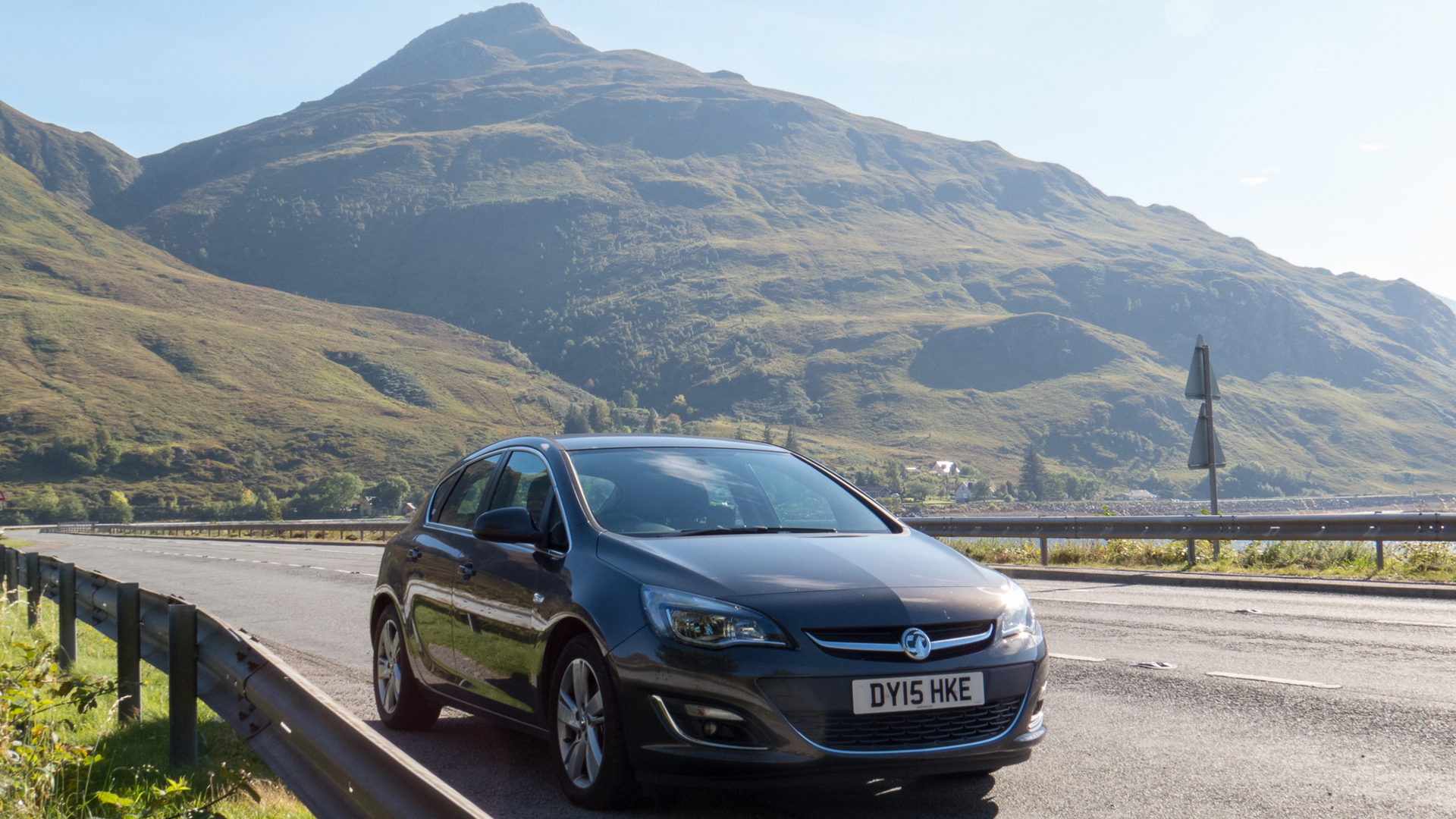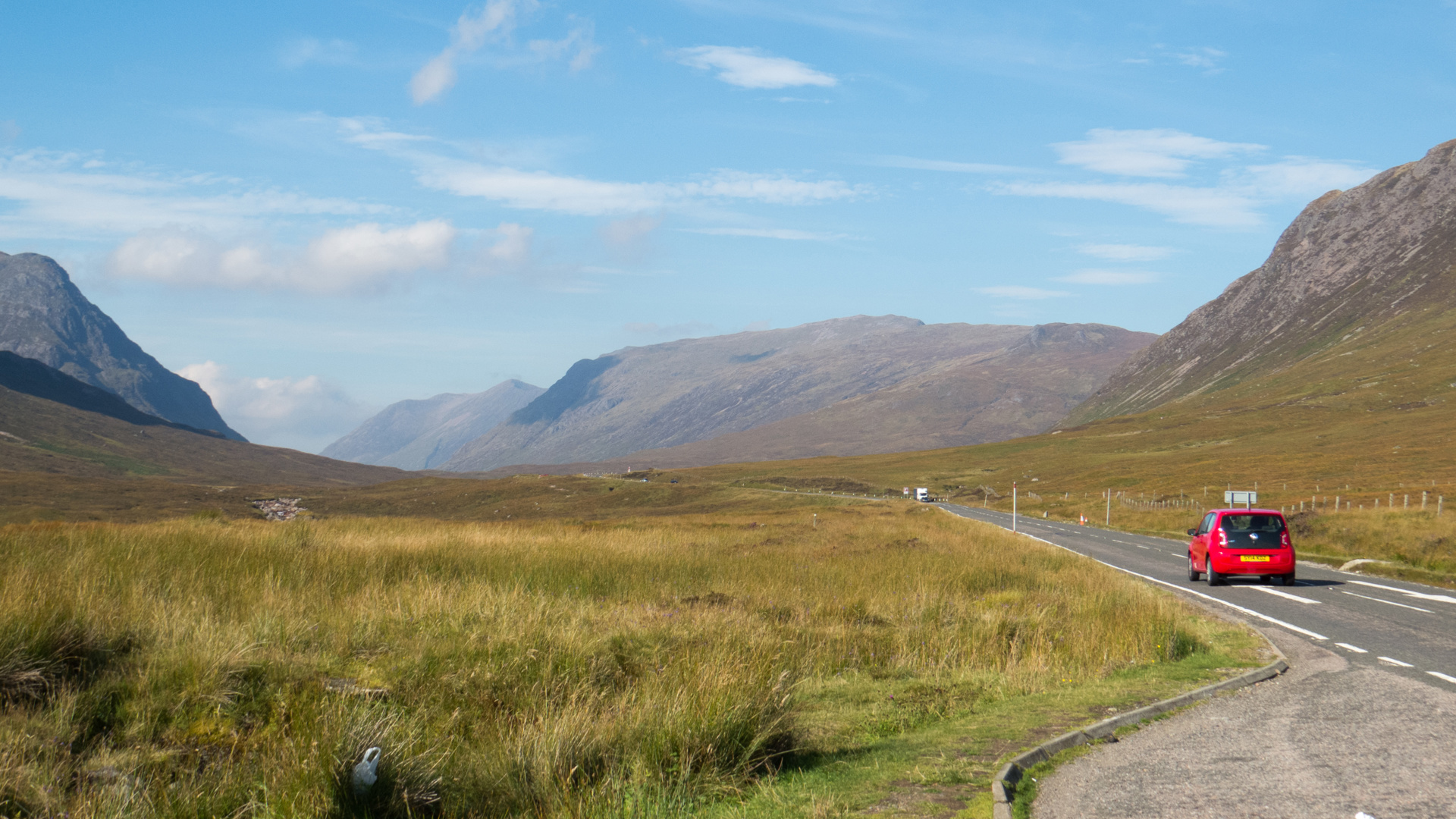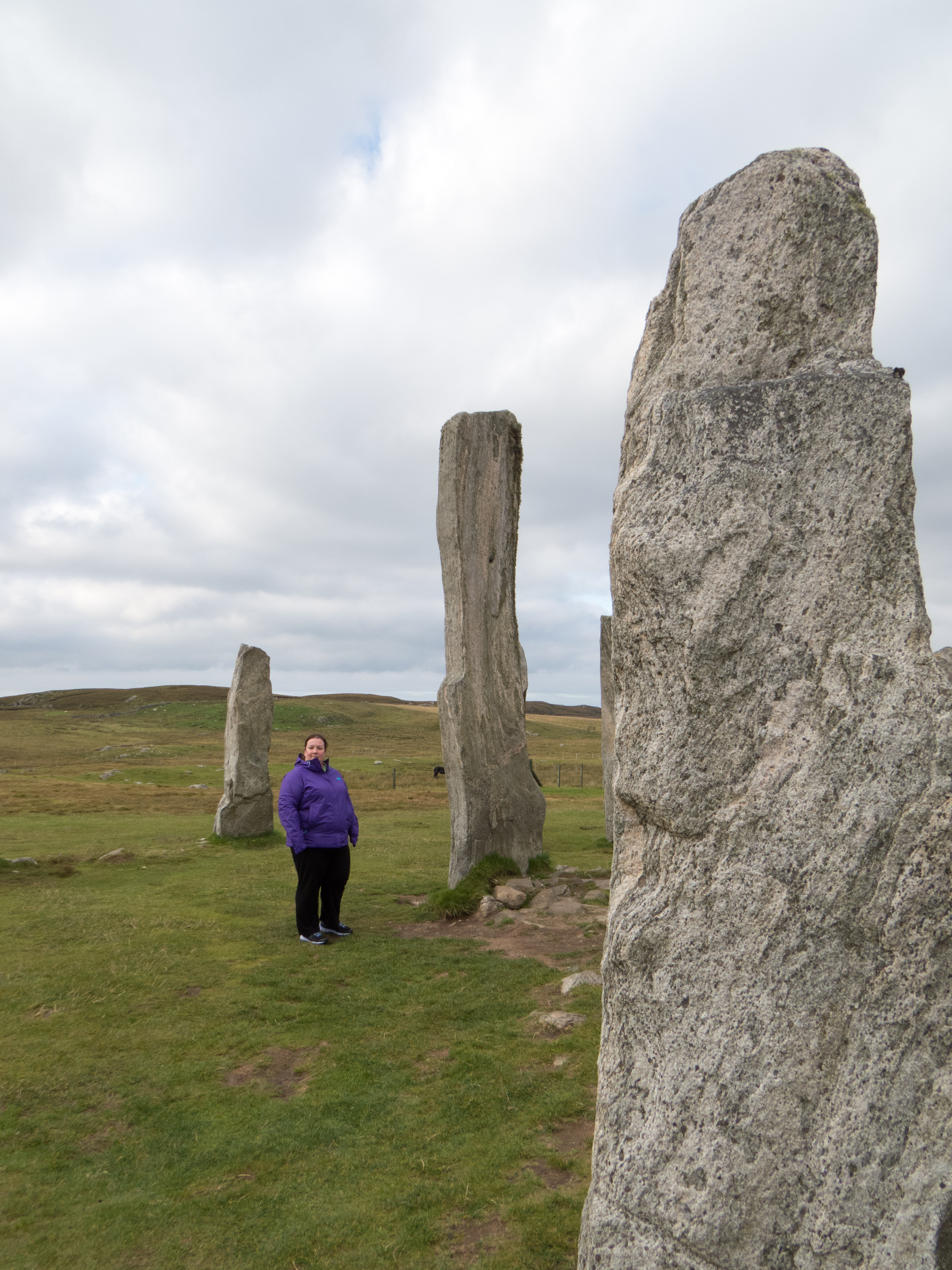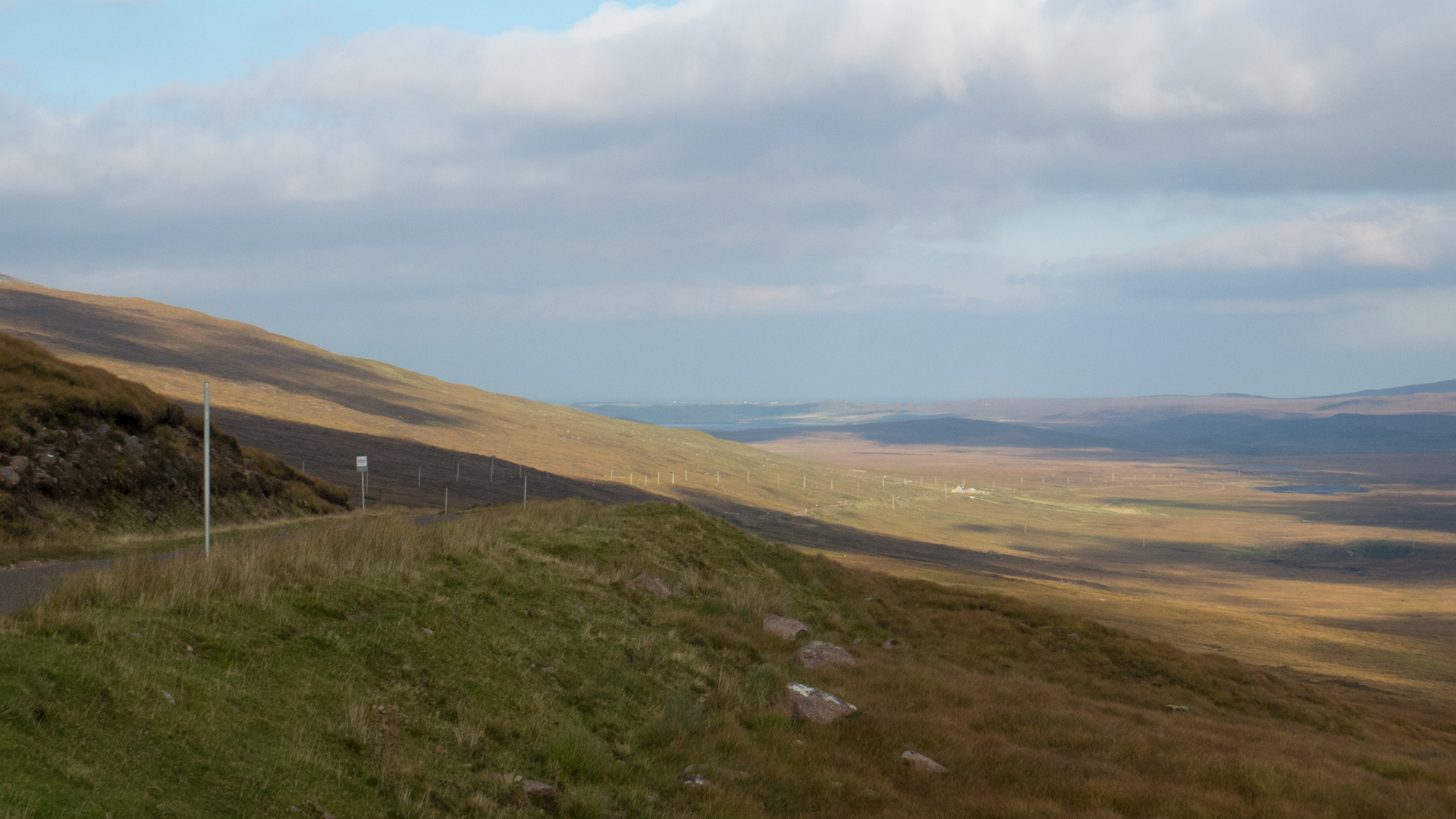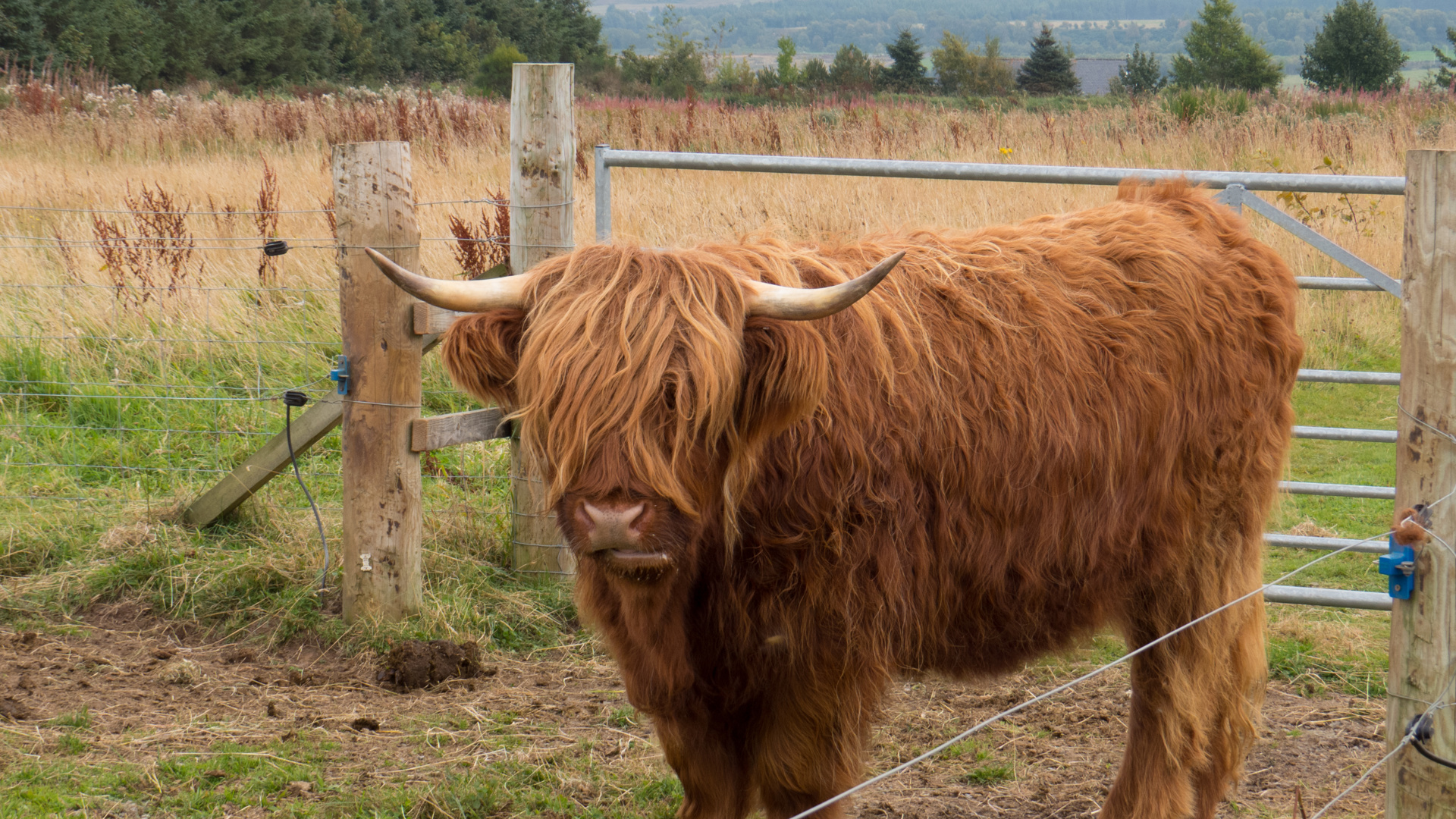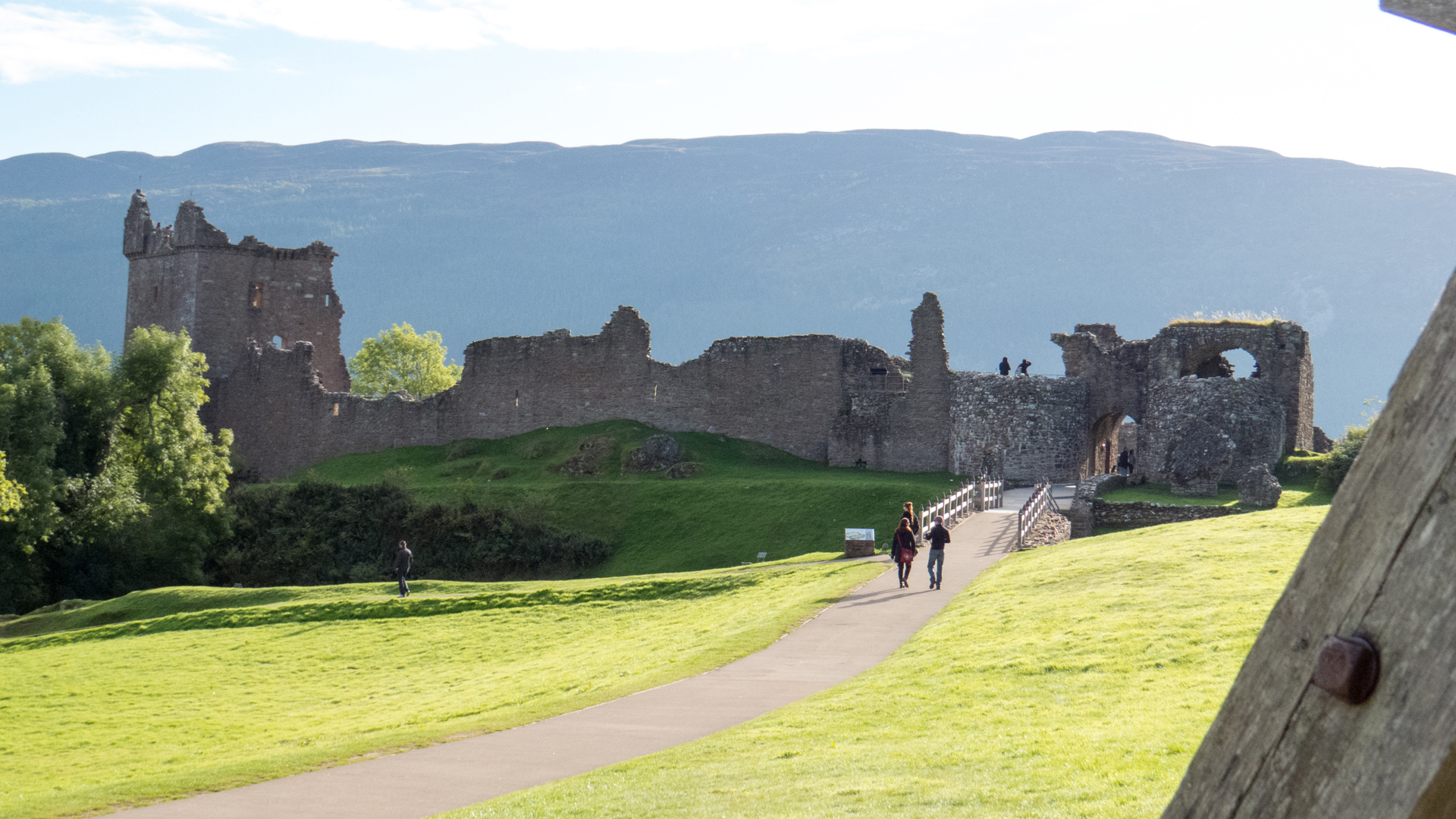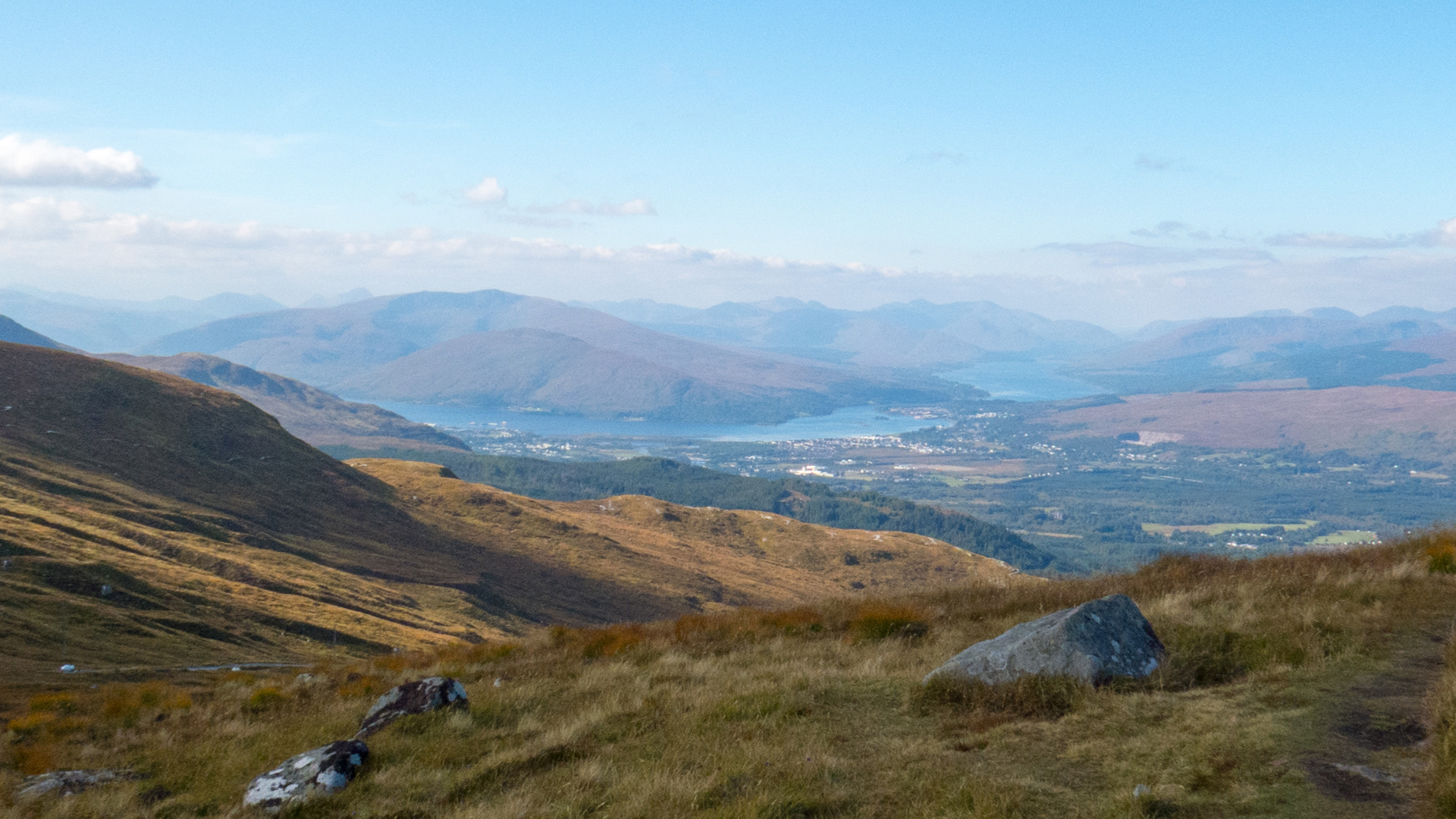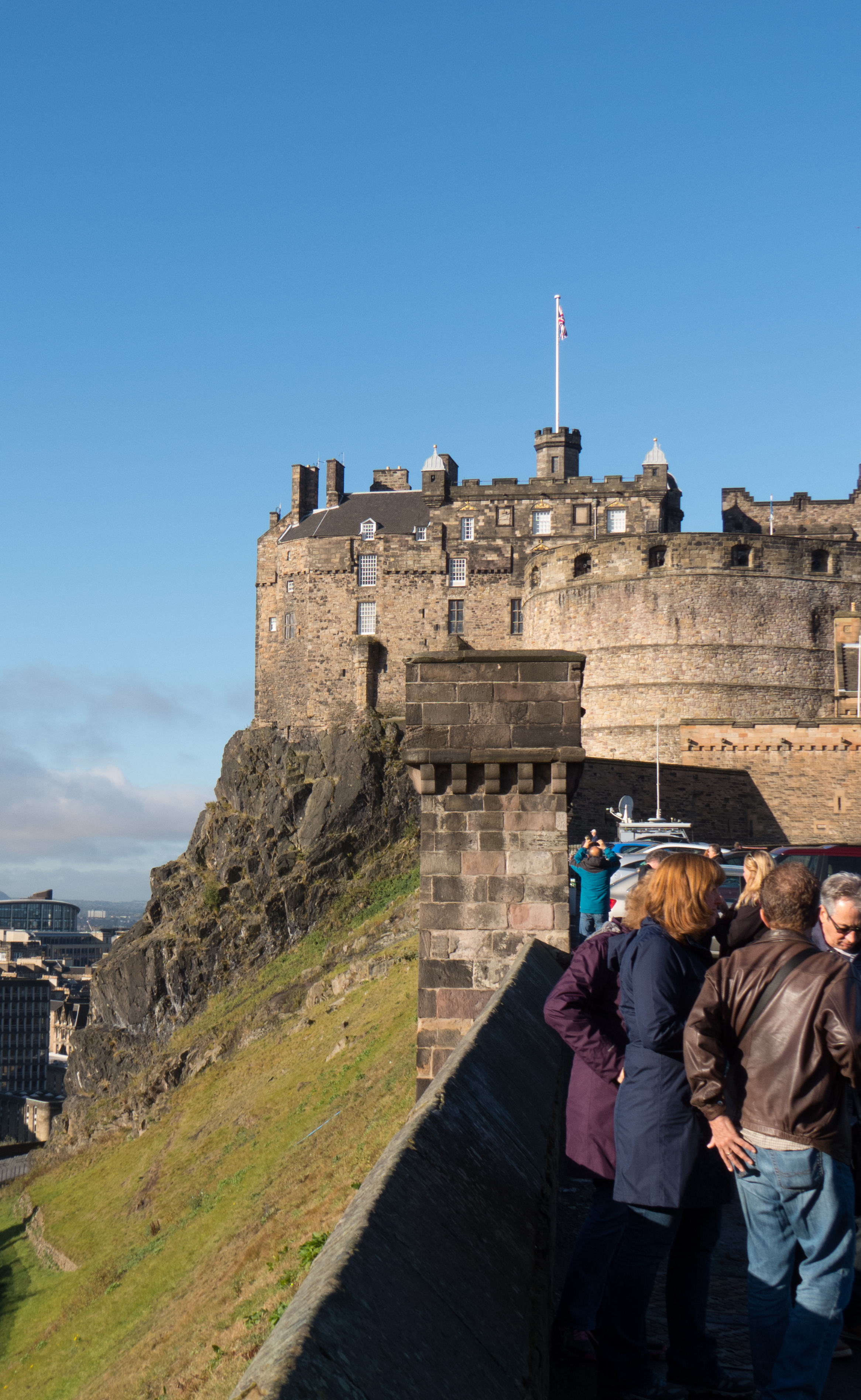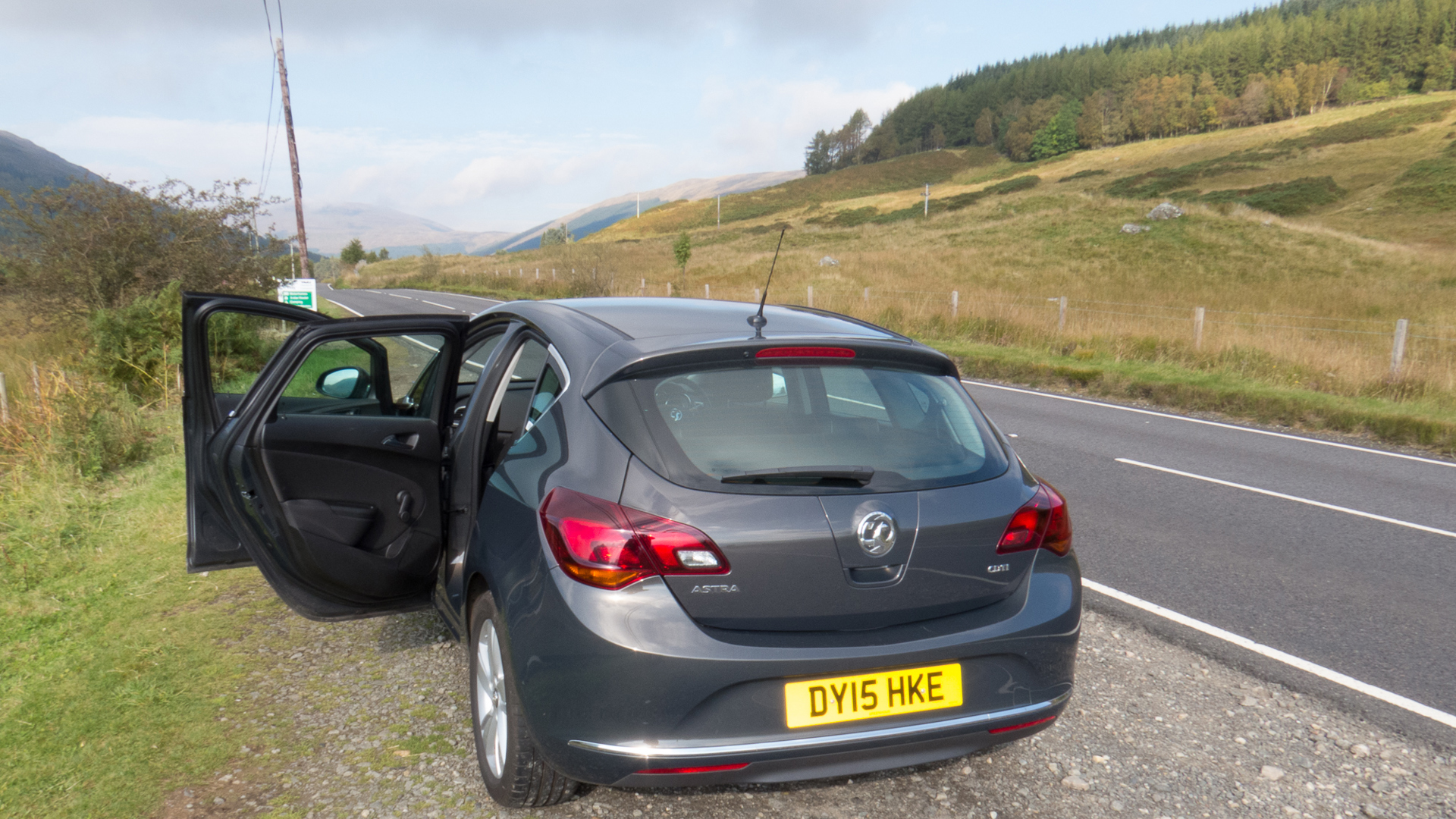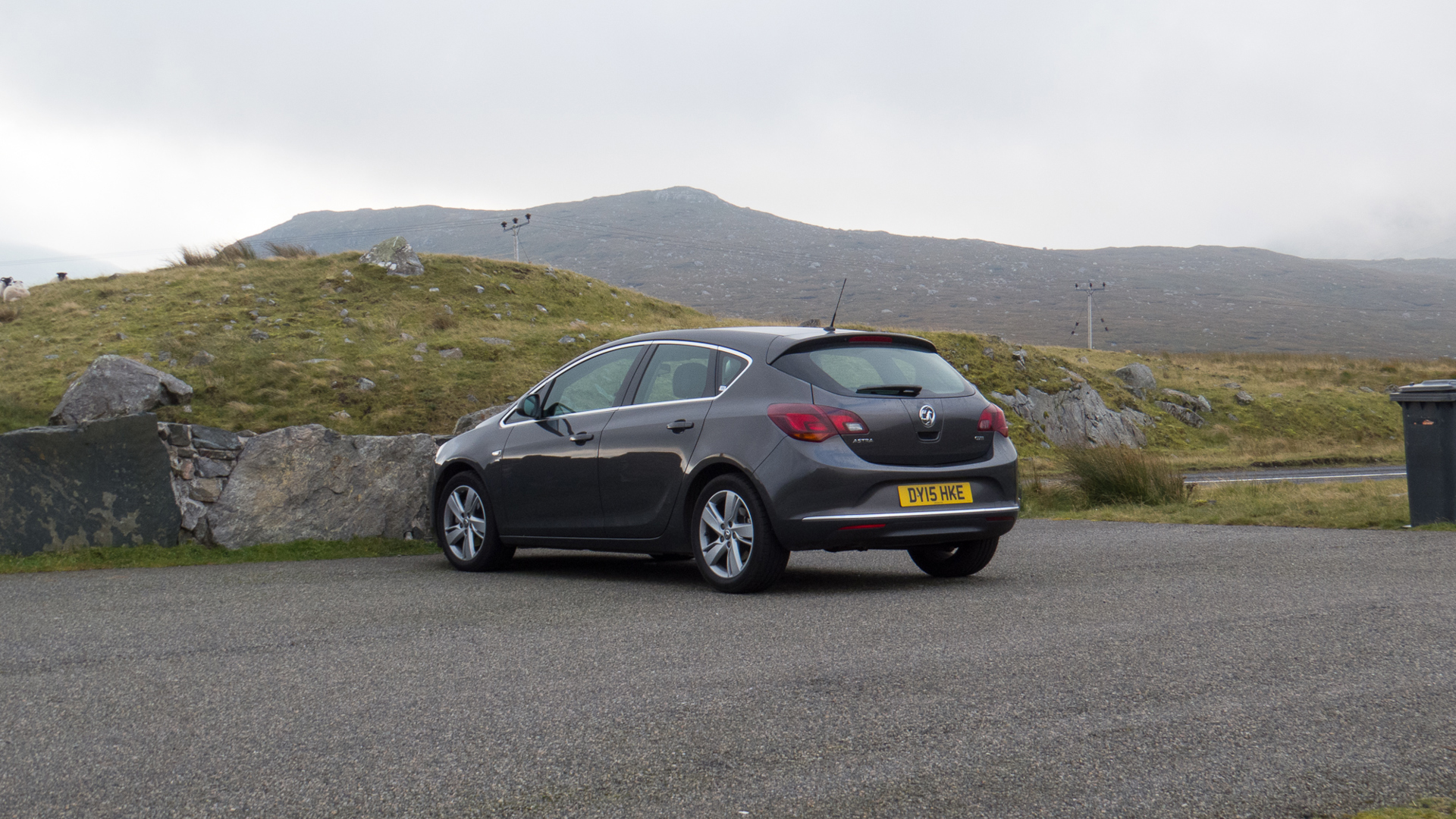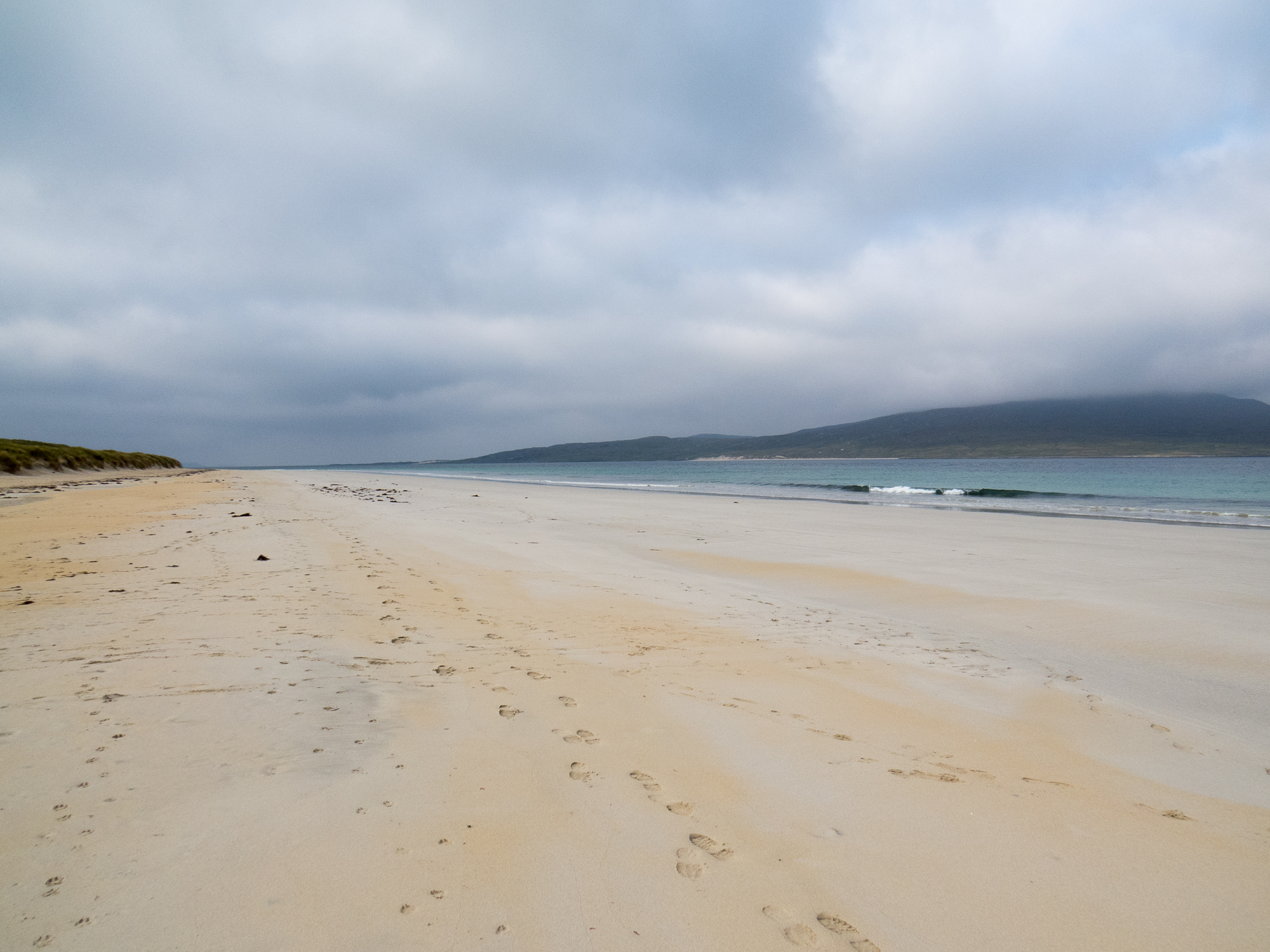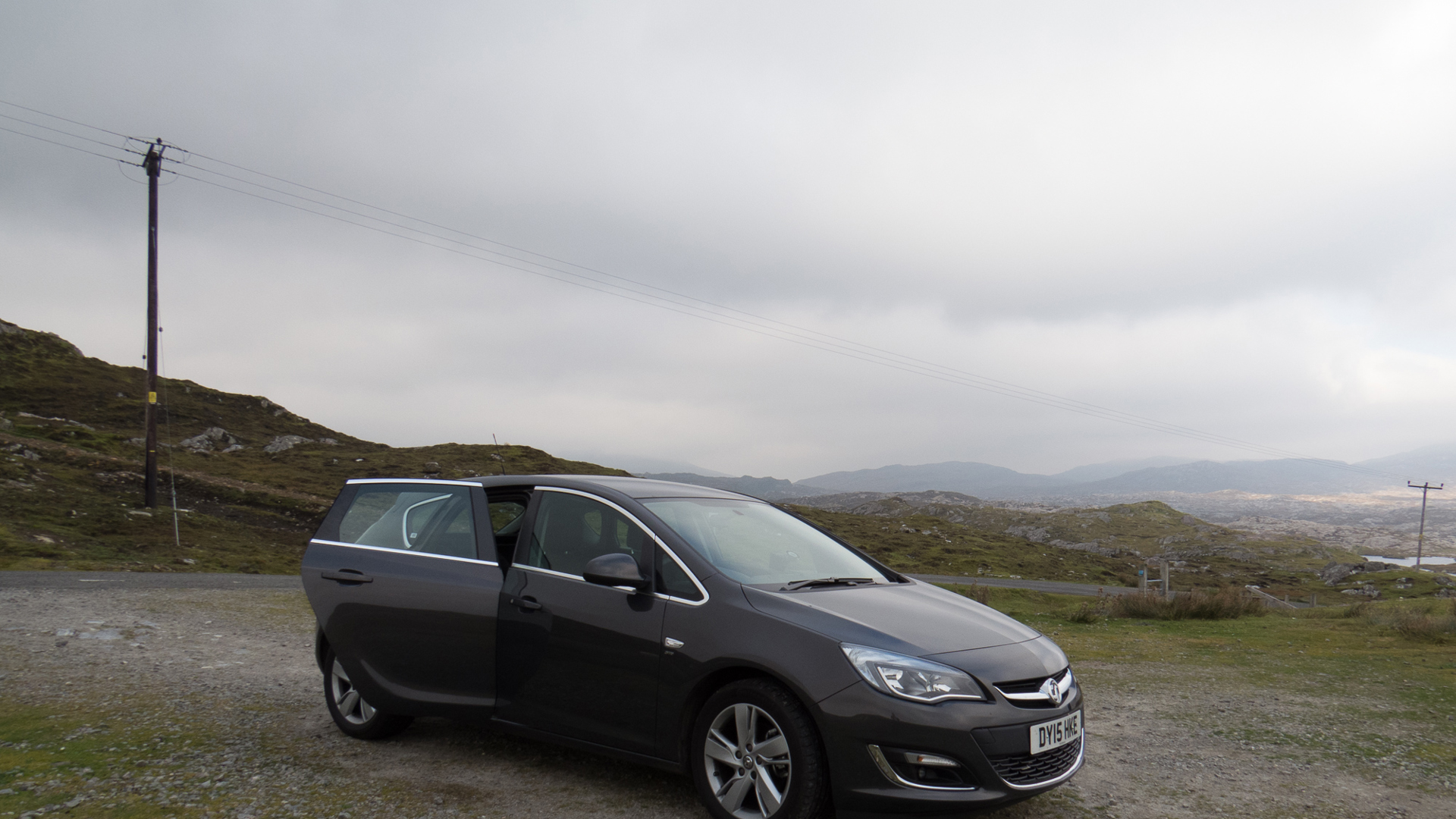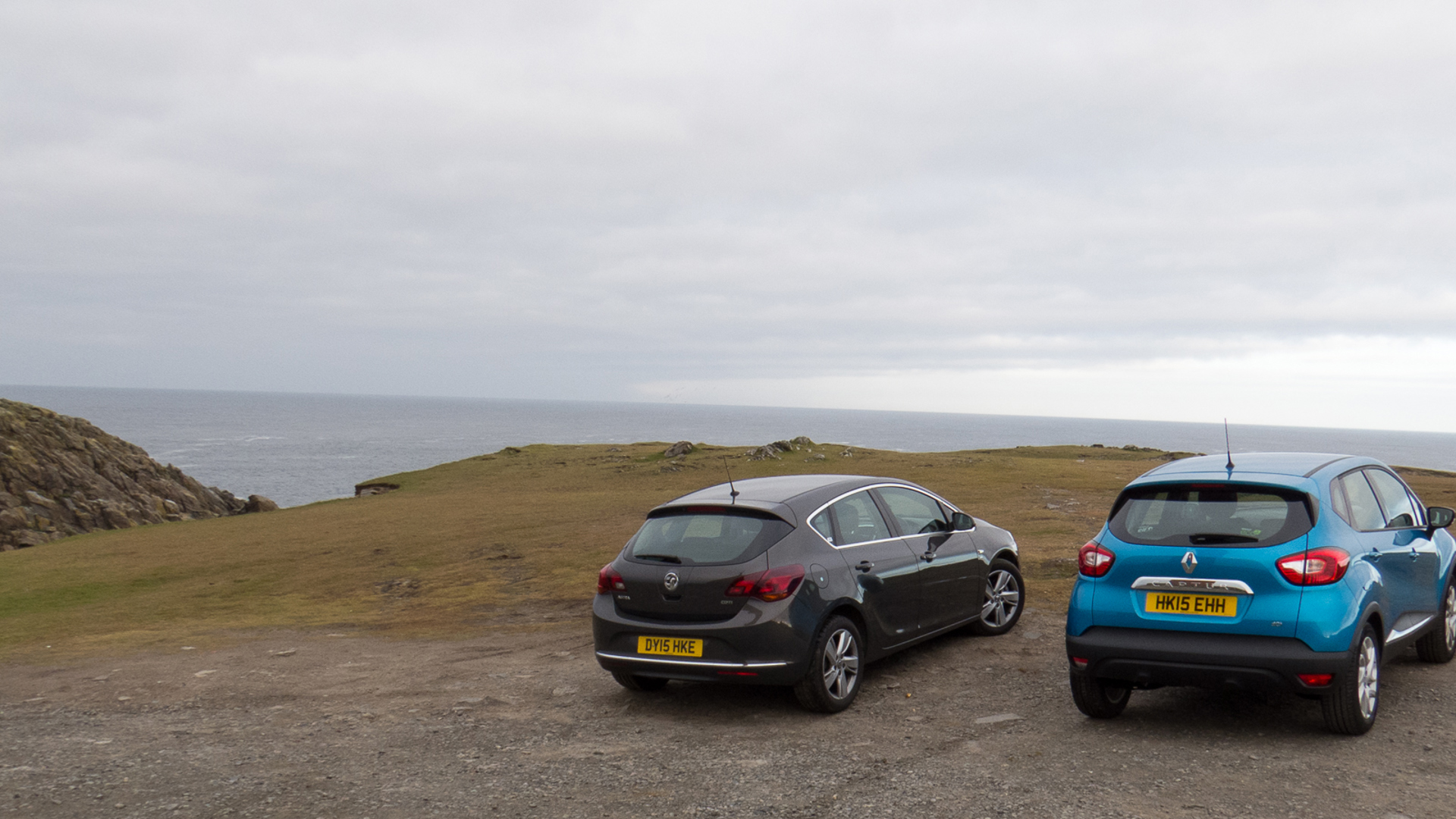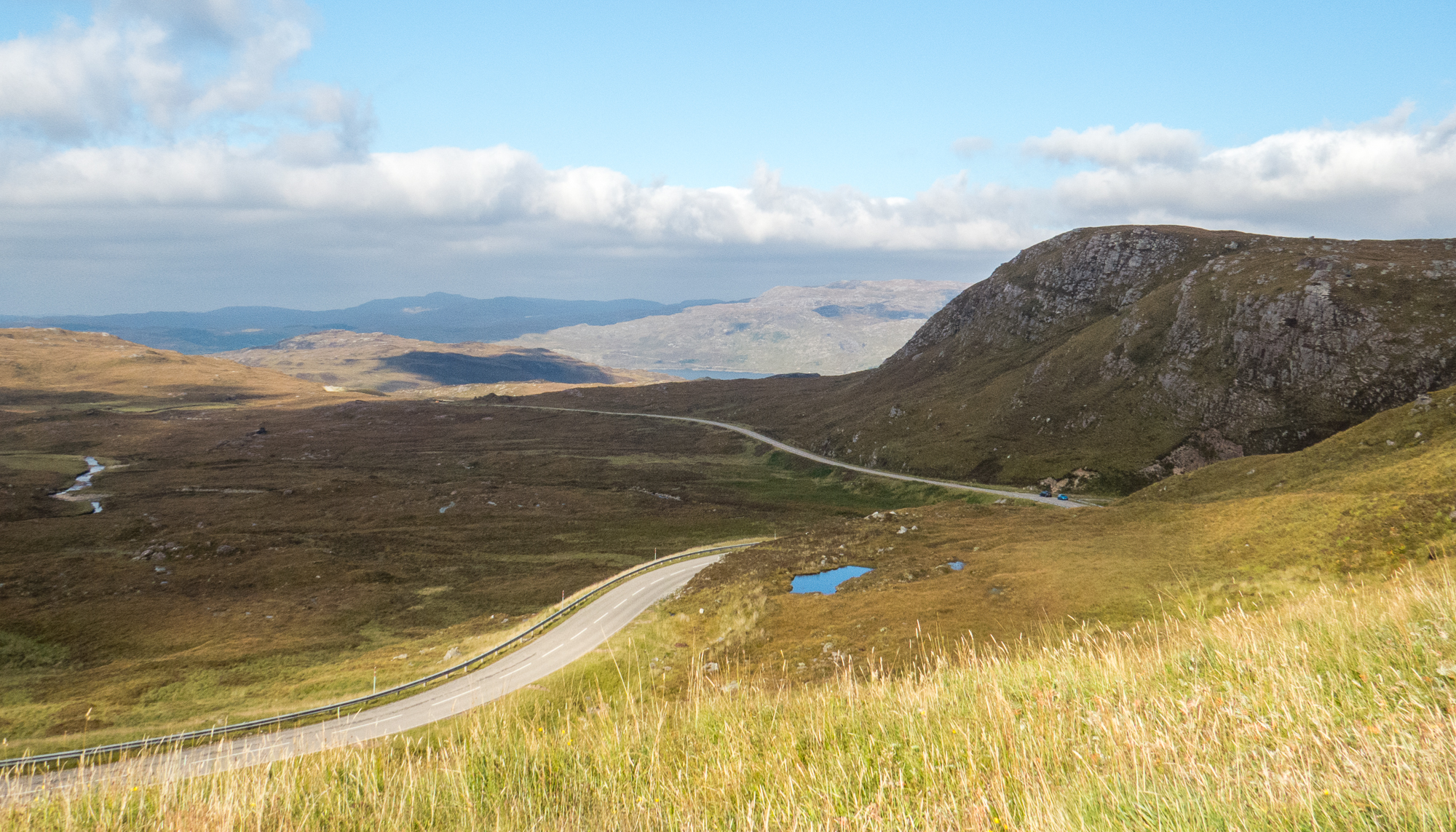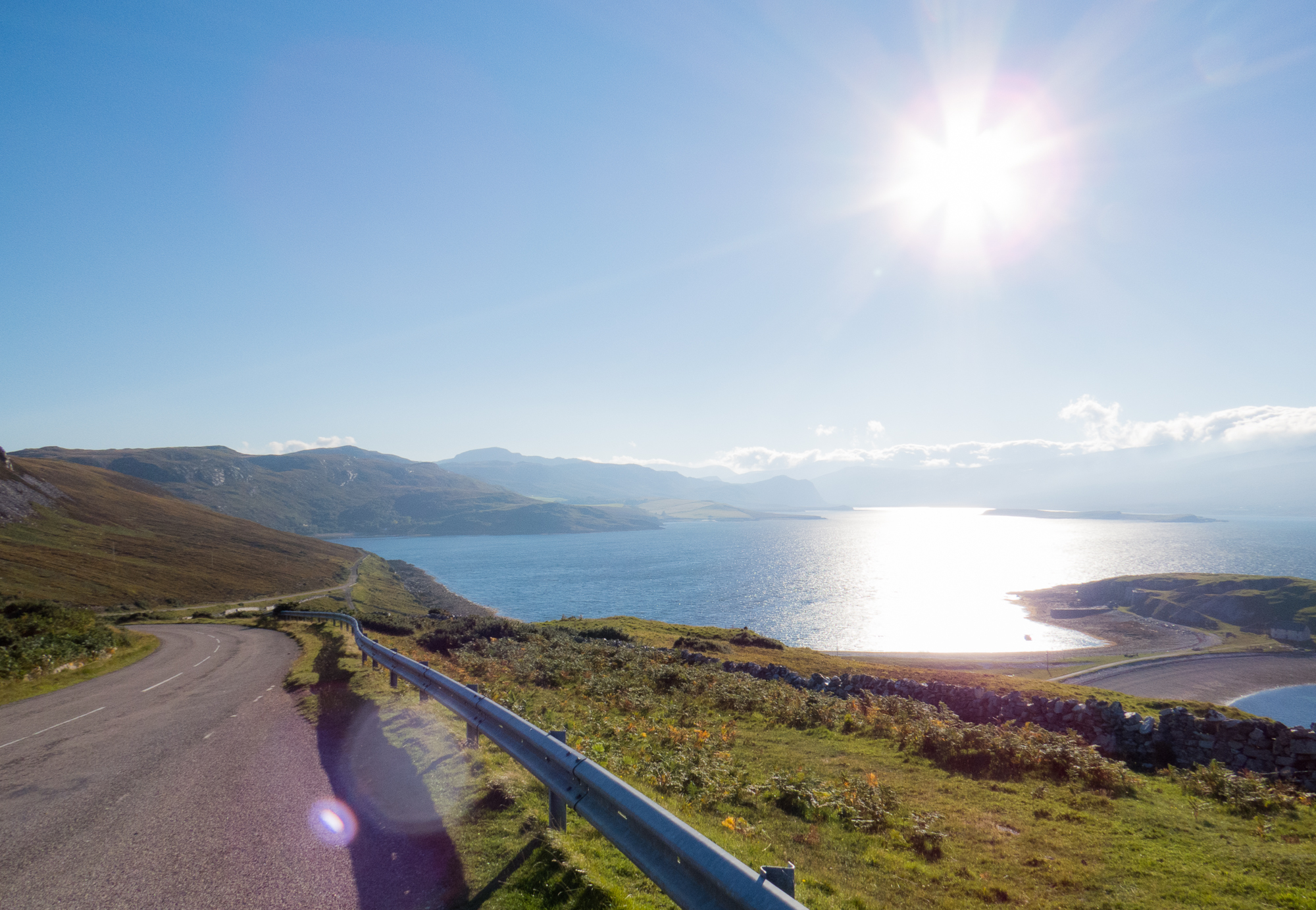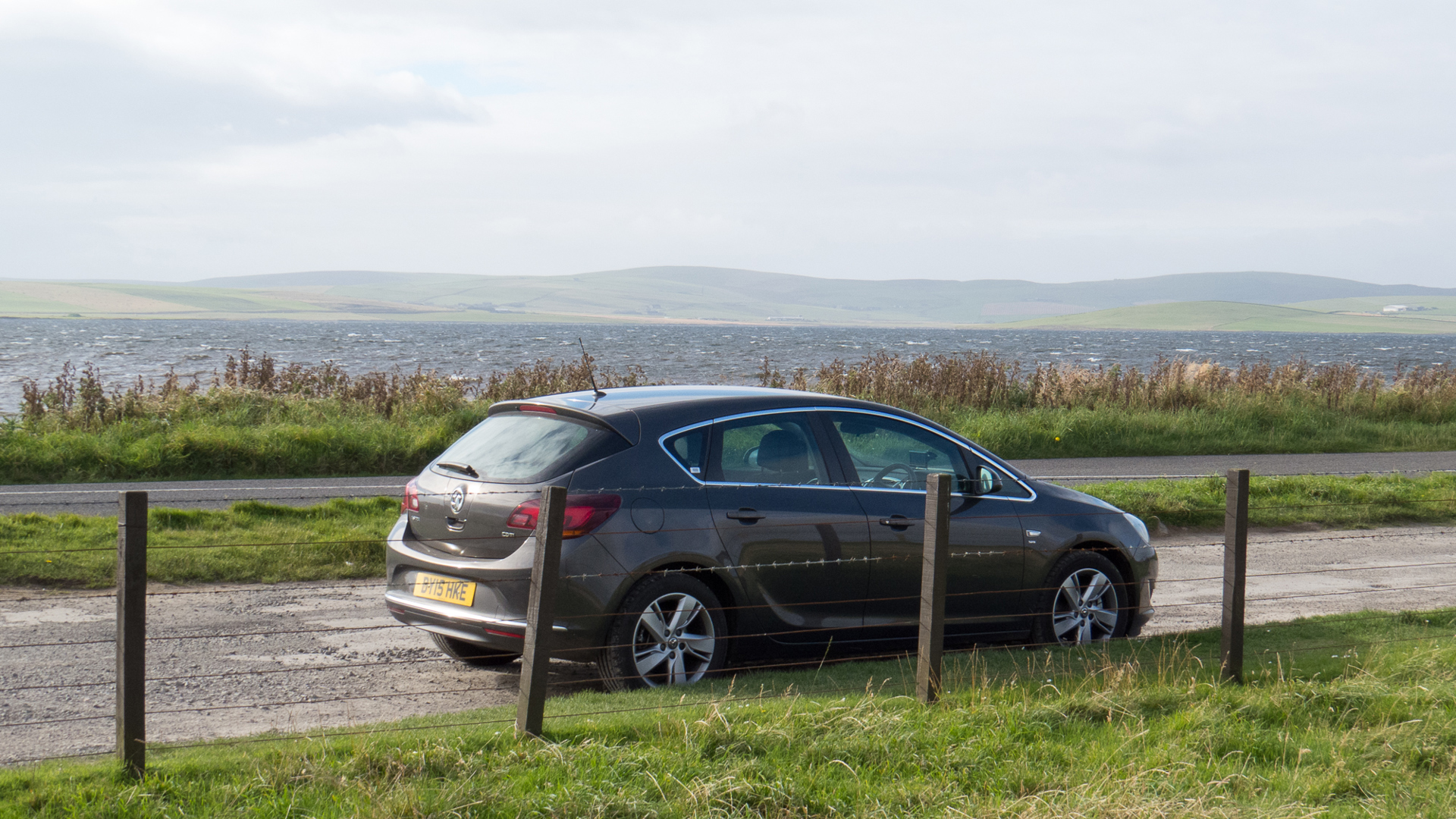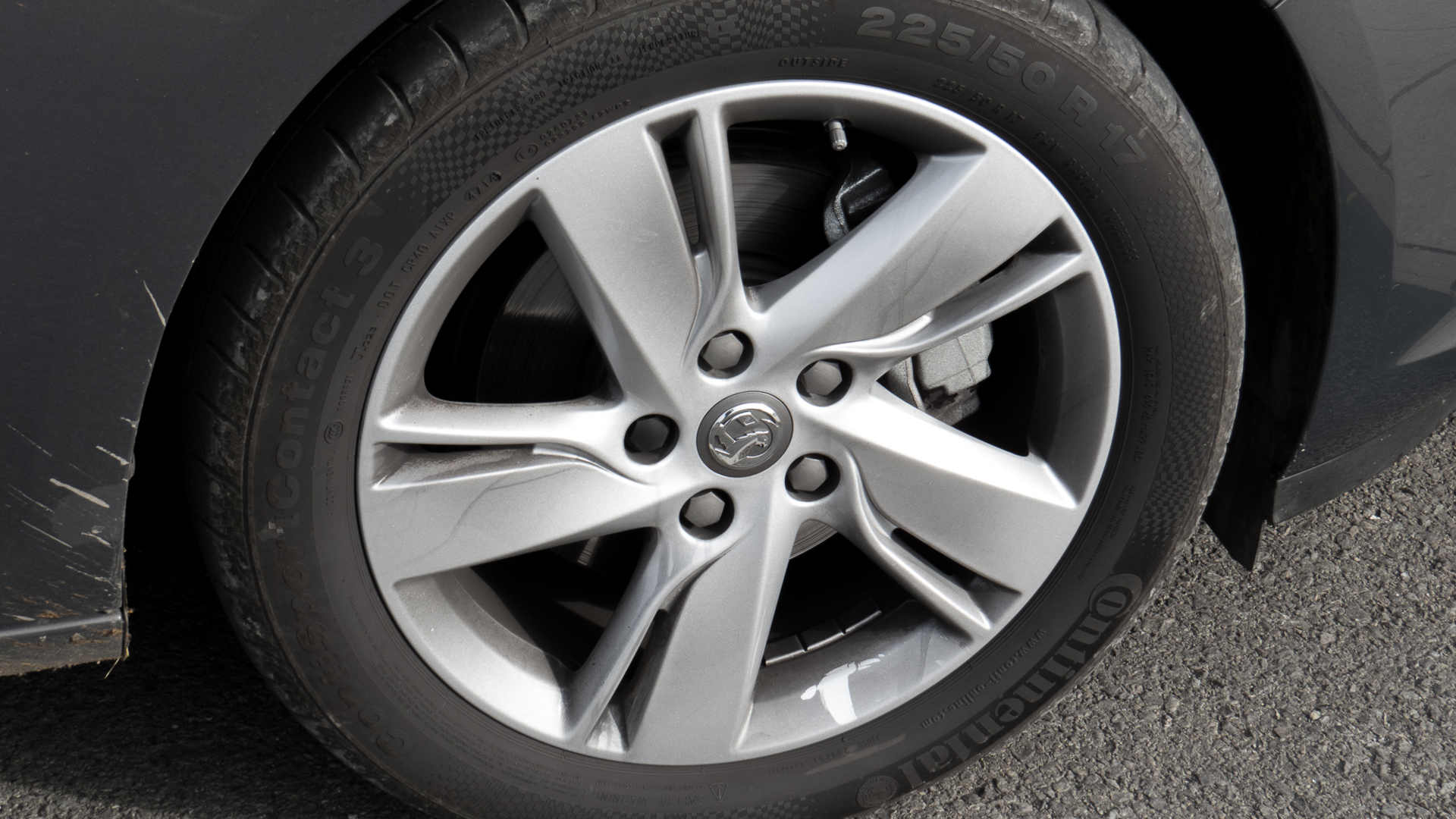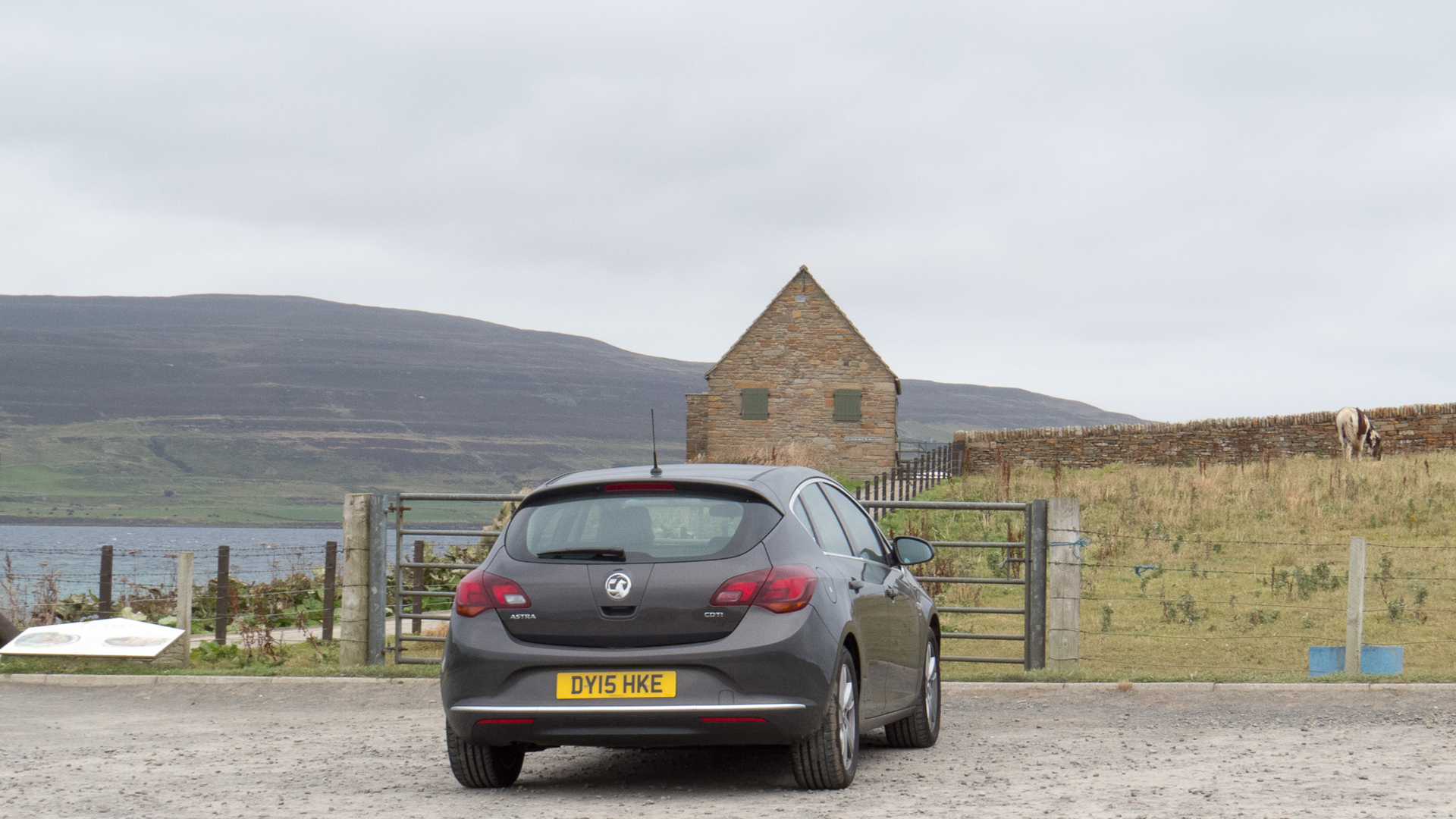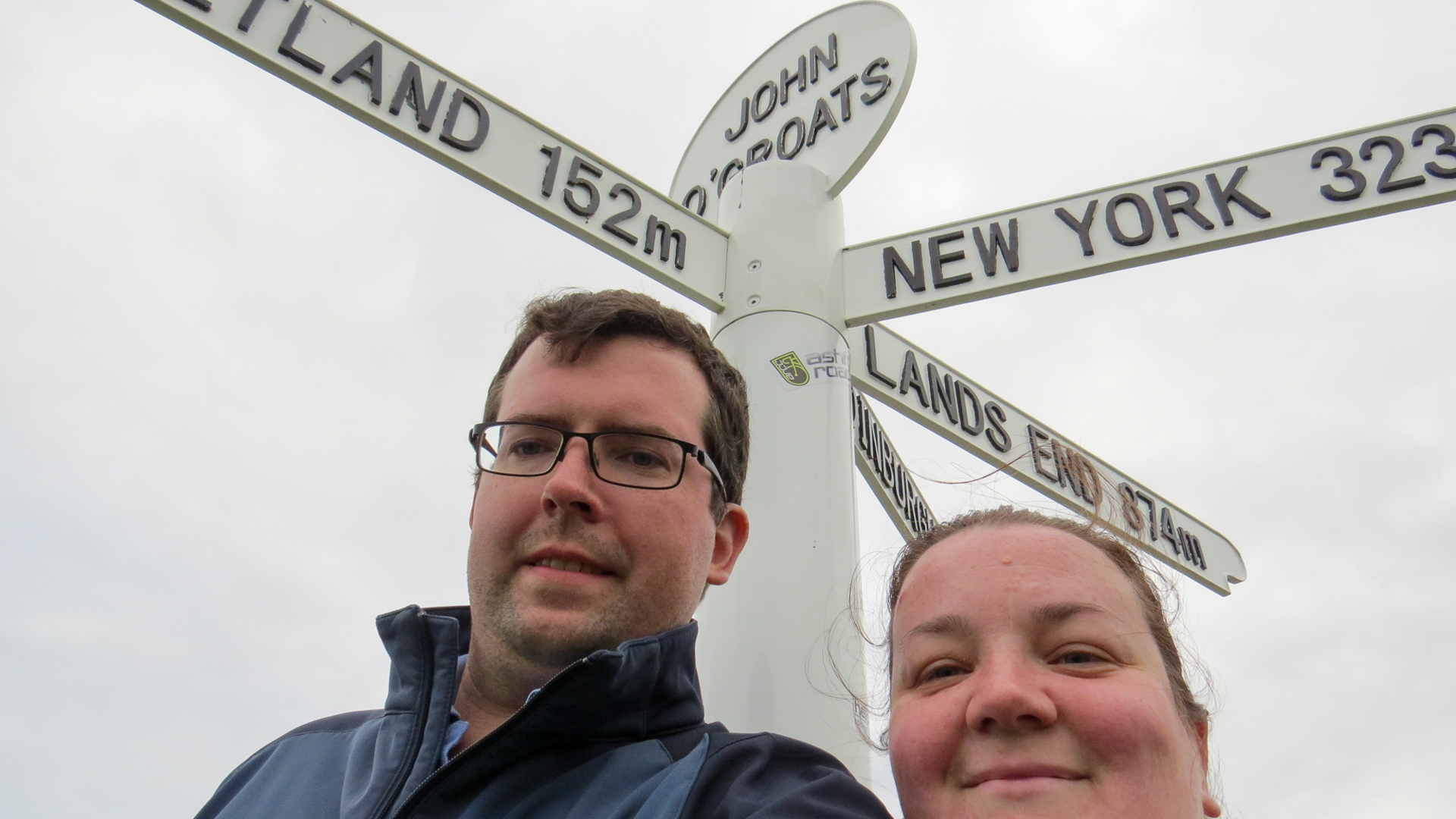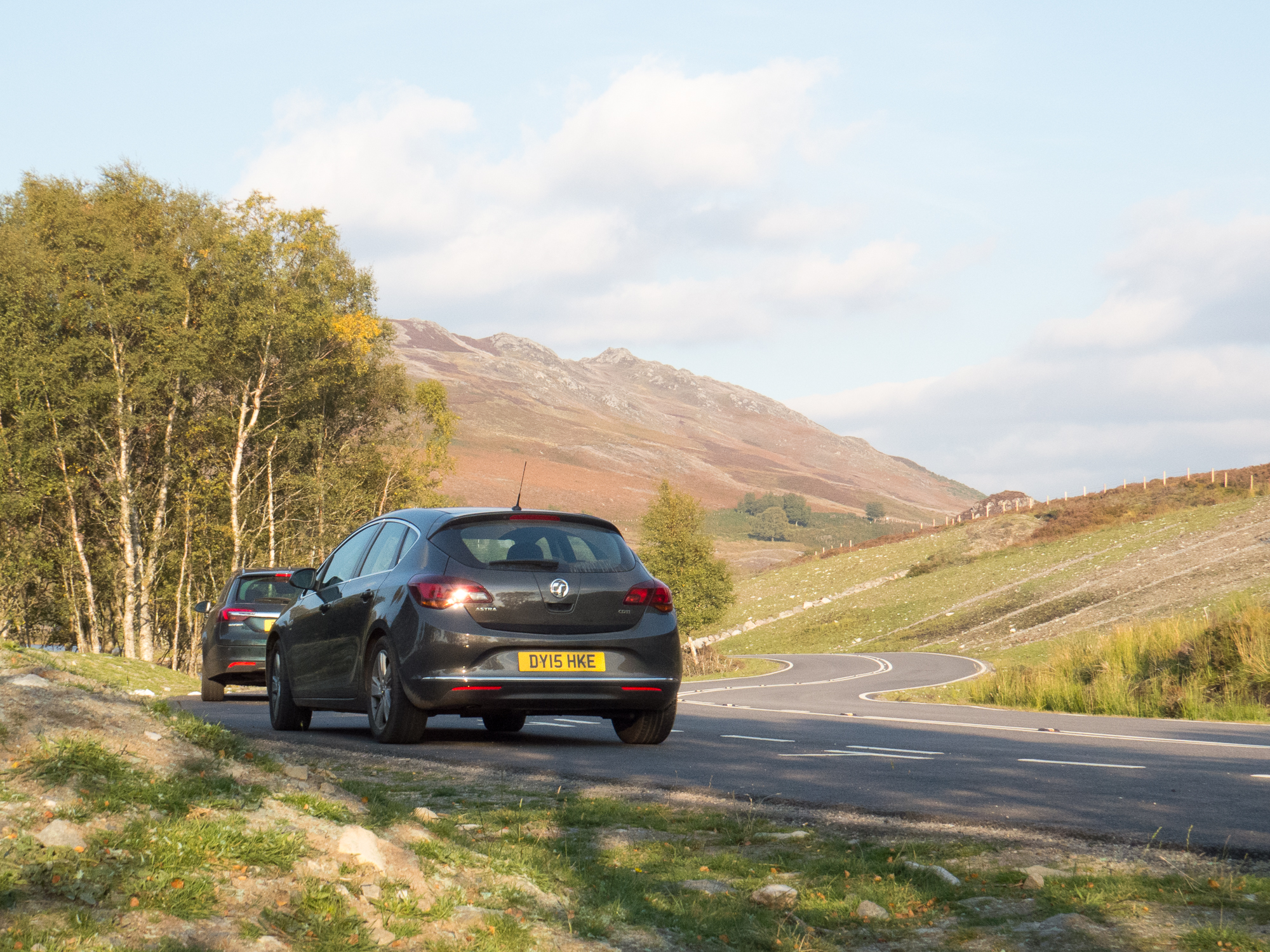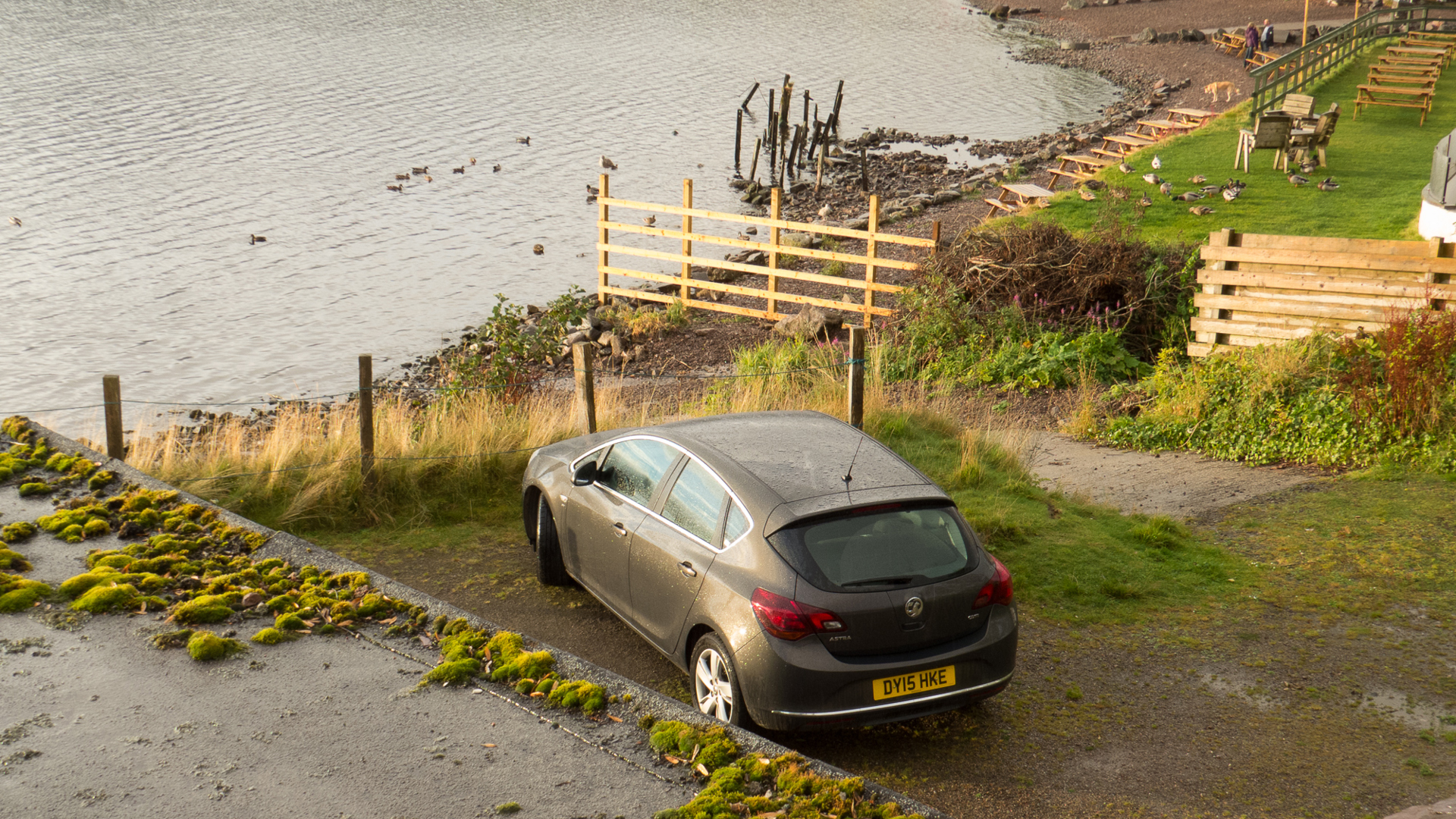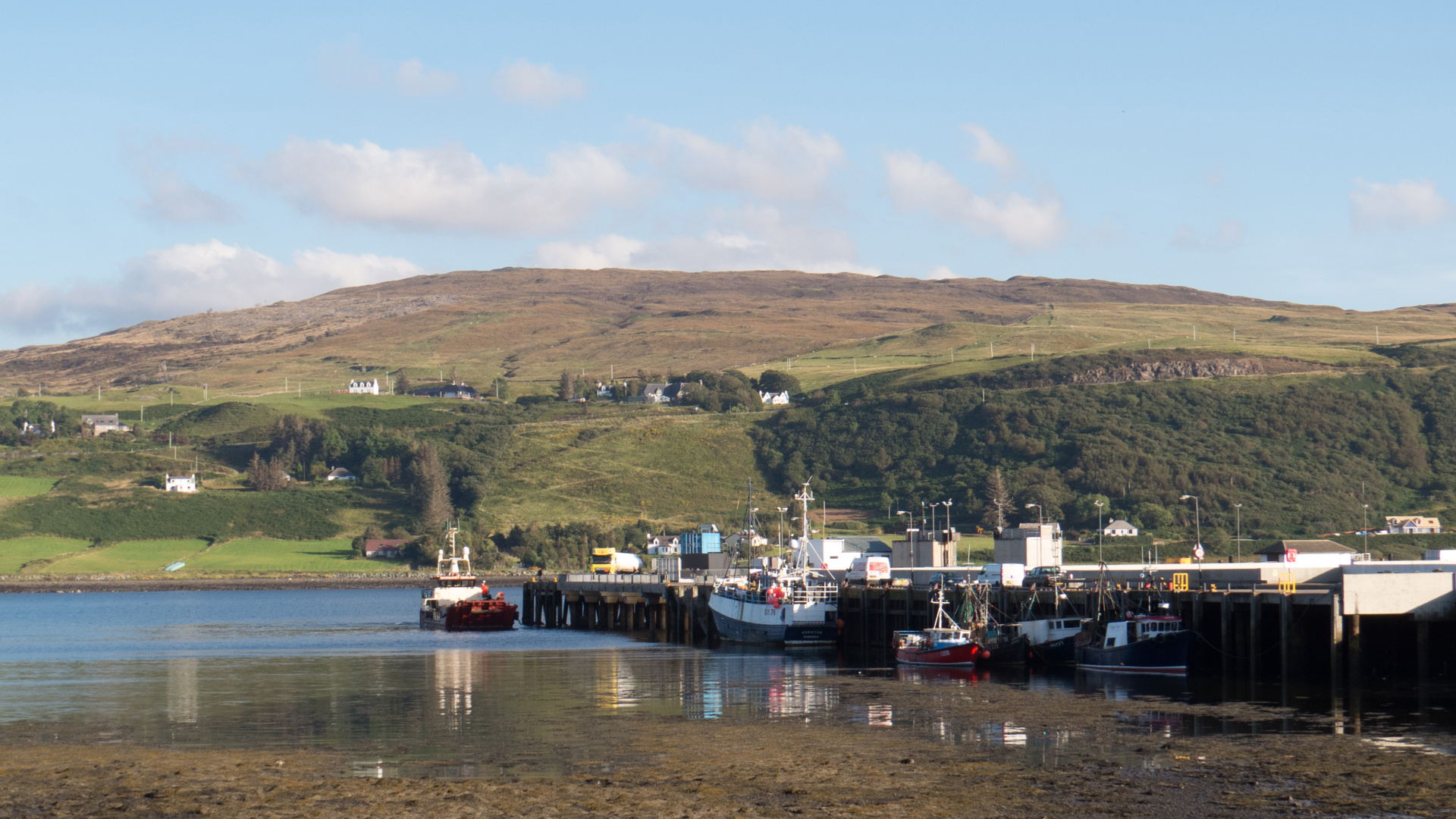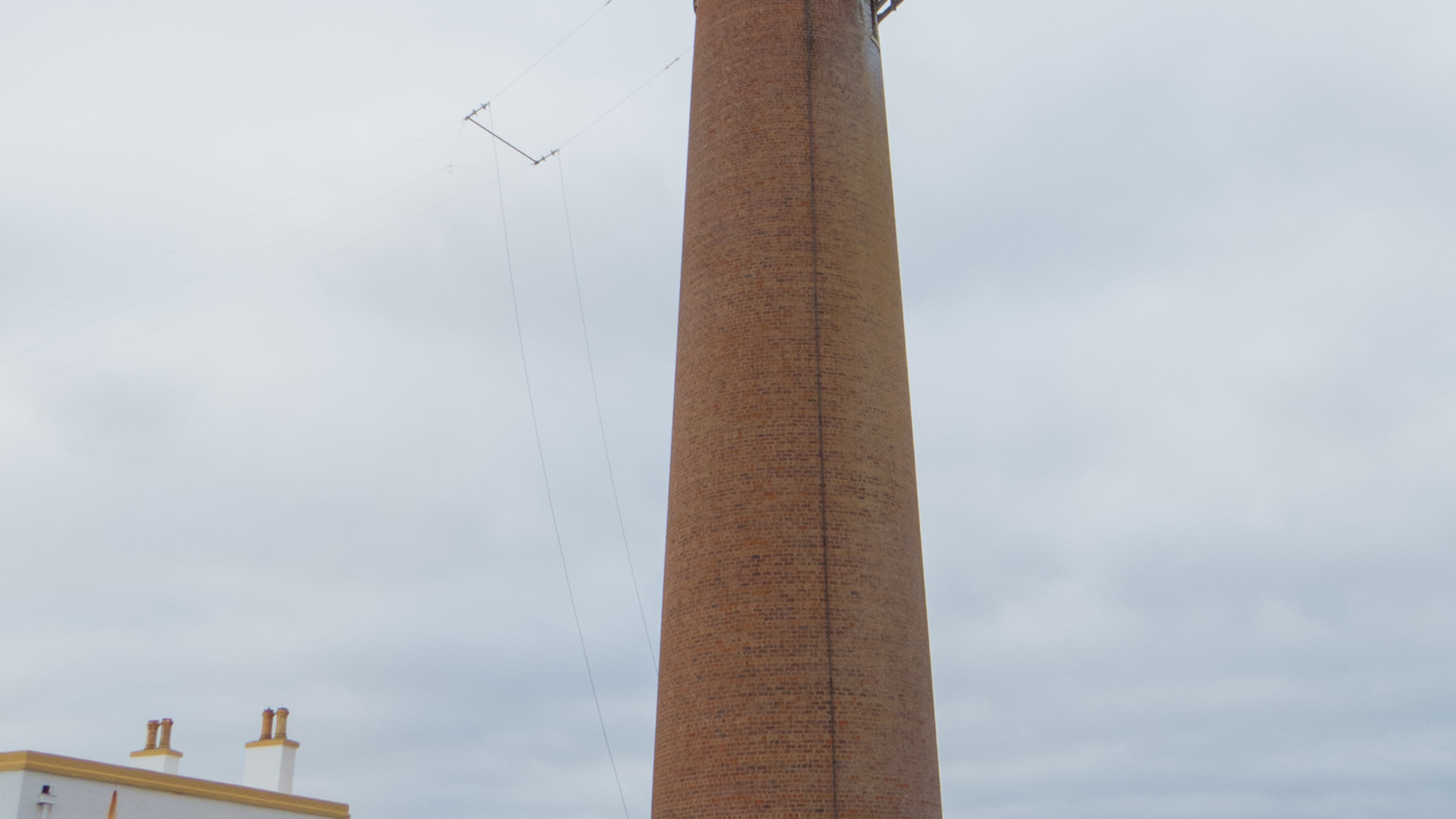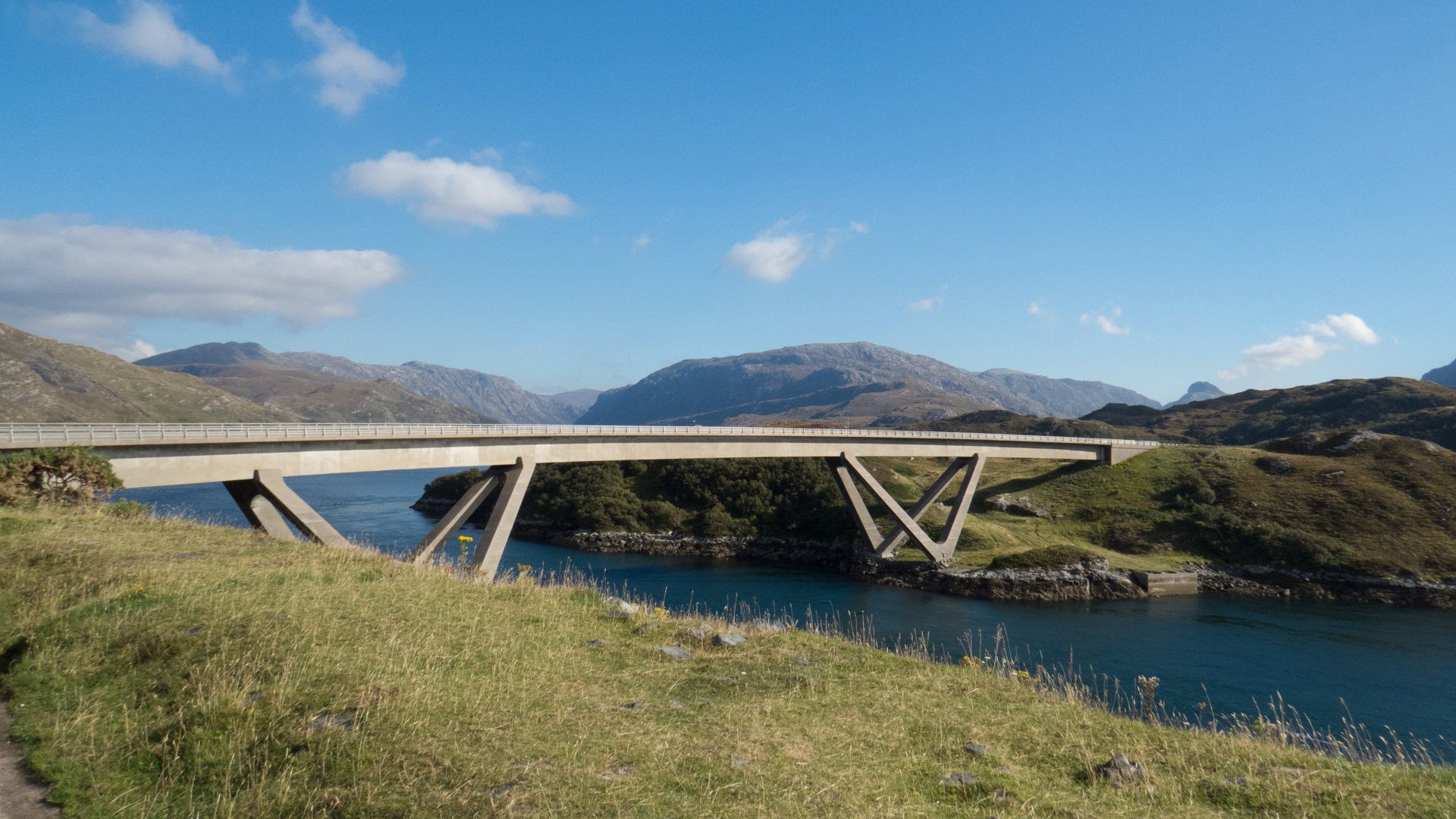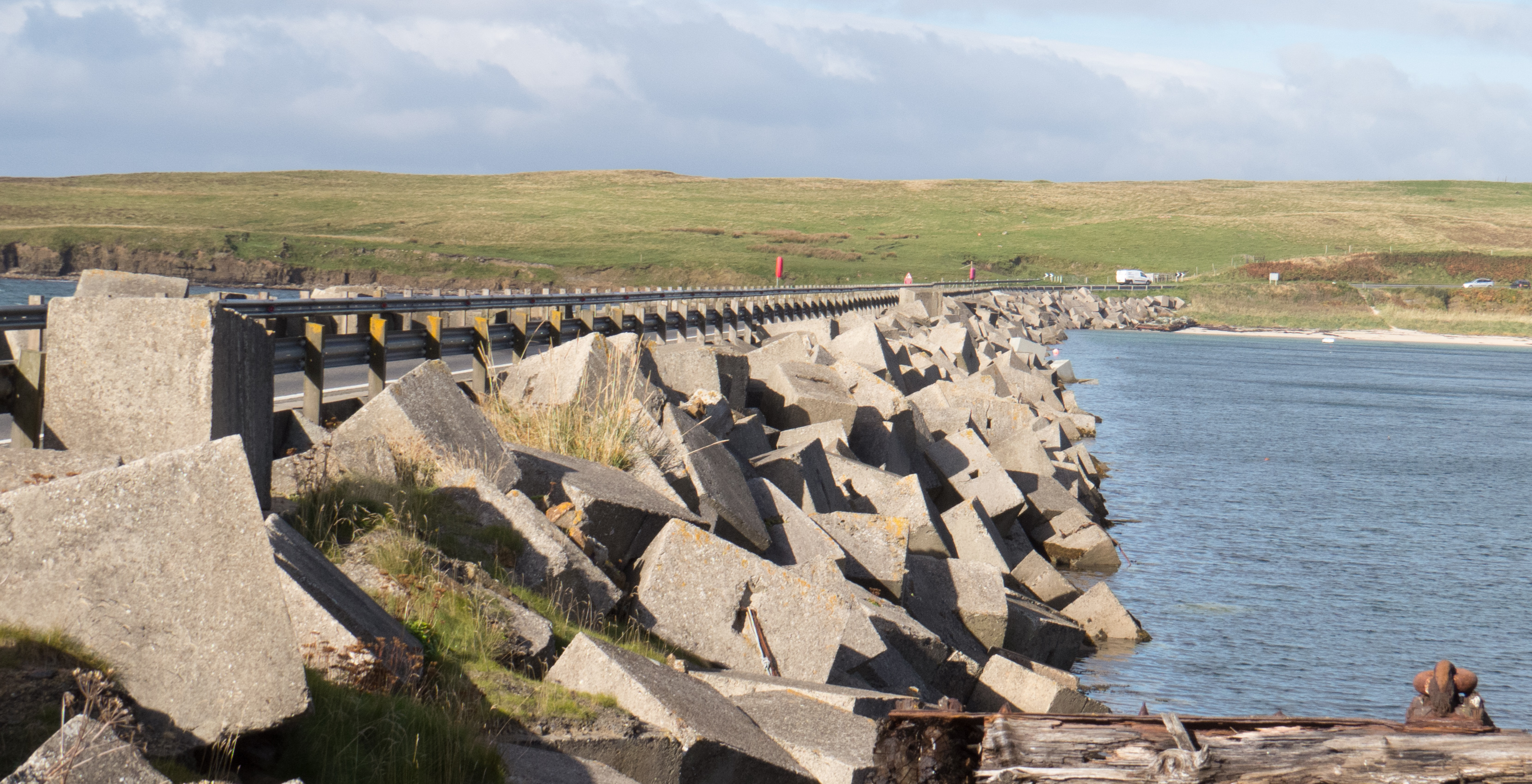I’m normally a big fan of rental car roulette. The excitement, fear and randomness of what will await you after the long walk across the rental agency parking lot. This excitement is diminished when you’ve been awake for almost 20 hours and know you won’t arrive at your hotel for another 12. Making things worse was the knowledge that my drive would be on the wrong side of strange, narrow roads. After clearing immigration and navigating Glasgow International I was in enough of a haze that I actually forgot to take the keys from the nice lady at Hertz, and had to walk back to the counter. A quick nap was in store, and then a walk to “the lineup”. My keys were for a pewter Vauxhall Astra SRi CTDi, one of about 30 identical cars on the lot. The first thing I appreciated about it was the large hatch area with enough room for two large suitcases and our carry-ons.
I know that GM is using Opel (the Opel and Vauxhall are one and the same car) as a parts bin for Buick and the rest of their small car lineup, but I didn’t realize just how much until I drove the Astra. The first thing I noticed inside is that the cluster, centre stack, vents and doors are 100% identical to the Verano. Except the lighting’s been changed to red instead of blue. Looks like there’s still some leftover Pontiac Excitement to get rid of (and it looks just as bad in red as it does in the Cruze and Verano blue). The second thing you notice is that the display in the middle of the cluster is crooked. The right side is a good 1/8” lower than the left. It’s really obvious. Maybe somebody got lazy in the right-hand drive conversion department? Later that night, I’d notice the gauges also don’t dim enough for night-time driving. There’s a lot of red, and it can be distracting.
The seats are much nicer than in the Verano as well. No leather trim, but lots of nice stitching. They’re very well bolstered, which will be really important as my wife and I spend the next two weeks driving the islands, Highlands and North Coast of Scotland for our honeymoon. The steering wheel is leather and feels great, even after 8,000 km of grimy diesel rental driver hands have held it. The climate control takes a long time to develop heat and clear the windows, but that’s not uncommon with diesels.
Leaving the airport I was nervous to be on the left of the road, but when the first car I saw leaving the airport was a Morgan Aero 8 I calmed down and drooled a little bit. All I have to do is remember to keep myself closest to the centre line and I’d be fine.
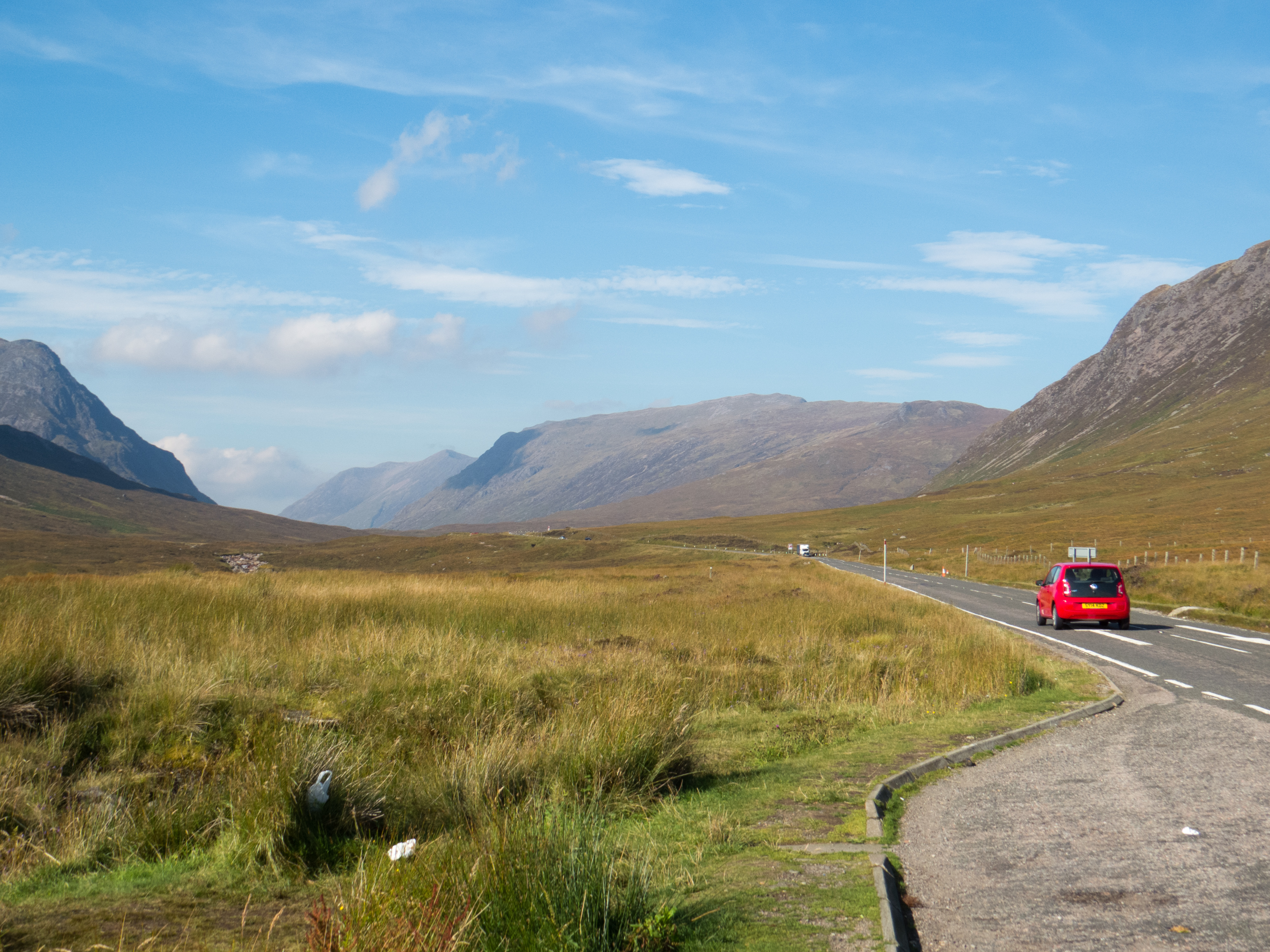 Along the A82
Along the A82
Our next stop, and the first meal in Scotland for my wife and I was at an ASDA supermarket. We stopped to get some snacks and some breakfast. It was my first look at the national beverage Irn-Bru (smells like cream soda, tastes like not much), and our discovery of my now-favourite breakfast food: the bacon roll. It’s a thick slice of bacon with a fried egg over easy. It’s heaven with some brown sauce (HP sauce).
After breakfast it’s onto the M8 motorway, heading north toward Fort William. It’s about 9 am when we get on the motorway and we have to be in Uig at 5 pm to catch the MV Hebrides for an hour-and-a-half trip to Lewis where we expect to arrive at our cottage around 8:30pm. A quick look at the map shows that the trip is a short 350 km, and most of the roads are posted at 60 mph. This should be a snap!
Well there are two problems facing us. The first is that once you leave the city the roads are extremely narrow and windy. A truck in the oncoming lane will be touching the center and shoulder white lines. Blind turns alongside rock walls are littered with the remains of mirrors and headlights. To say I’m intimidated by this would be an understatement. It doesn’t help that my wife cringes audibly each time I pass a truck. The second problem is that it's beautiful. Around nearly every turn is a view overlooking a loch or down a valley or up at a mountain peak. I ended up with about 1500 landscape photos, and that's less than half of what I would have liked to take. We found ourselves whispering "Wow!" so many times that it started to get annoying. Between the stopping for sightseeing and the 65 km/h speed I've been averaging so far thanks to the blind corners and traffic, we are far behind schedule. But once we reach the Isle of Skye, the traffic thins and visibility opens up. I start making real time, and quickly get used to shifting with my left hand. We make it to the ferry at the last minute, just in time for a 90-minute boat ride. The final stretch, from the ferry to the cottage, is dark and windy. Littered with white blotches at the side of the road I think at the time are rocks. We’re making good time as we’re in a pack of locals and we arrive shortly to rest for the night.
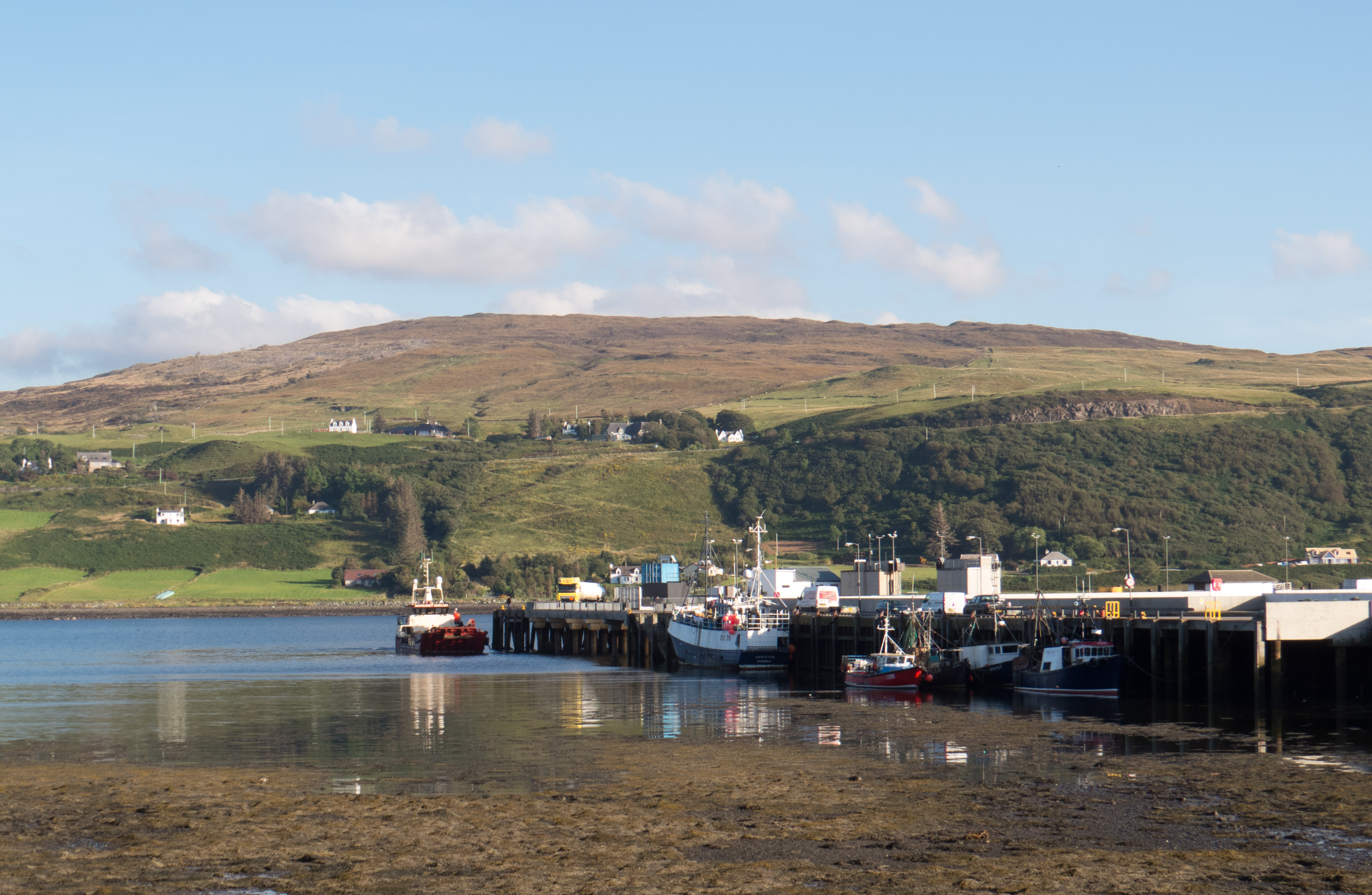 Ferry Terminal, Uig
Ferry Terminal, Uig
Morning breaks and we enjoy a full Scottish breakfast. I was dreading taking my first bite of black pudding but I had said I would try everything, so there it was on my plate. Turns out it is delicious. Like meatloaf that was heavy on the oatmeal. Day two started us on the Isle of Lewis. Our plan was to head south to the bottom of the Isle of Harris, then loop north to the tip of Lewis and back to the cottage. We head back south toward Tarbert, where the ferry dropped us the night before. It’s daylight, there is no traffic, and I can start to really enjoy the twisty, open roads on this part of the island. Two things quickly terrify me. The first is how far down the dropoffs are. I did not see those last night, and it’s for the best. The second thing is that those white blobs weren’t rocks. They were sheep. Hundreds lining the roadside, inches from the edge of the pavement. Fortunately they don’t move often, and when they do it’s slowly. Nothing darts out in front of you like you would expect from deer and no standing there obstinately and unmoving like a moose.
Our first stop is the beautiful white sand beach at Luskentyre. It has been voted as the best beach in the UK, and one of the top 10 in the world. On the way, the lack of traffic and better visibility on the open roads let me finally start to stretch the Astra’s legs, and we soon fall into a rhythm that lets me get the measure of the car. The diesel in this car… Well, that’s about all I know for sure about it. There’s nothing anywhere on the car that can tell me which engine it has. No stickers under the hood, nothing on the door. Even the VIN didn’t help. I ran the licence plate when I got home, which said it’s a 1.7L, so that’d make it the 128-hp 1.7L CTDi. That feels about right, so I’ll go with it. The engine was reasonably quiet, and fairly smooth. The power band is surprisingly narrow. Drop below 1,200 rpm or push it over 3,500 and you’re wasting your time. It stops pulling long before the 4,000 rpm power peak. The car produces 221 lb-ft of torque from 2,000-2,500 rpm and that’s where you should try to keep it. Below 1,500 rpm it’ll buck and jerk, and at high revs you make more noise than power. Fortunately, the six-speed manual transmission allows me to make the most of the torque. Second, third and fourth are all getting frequent usage.
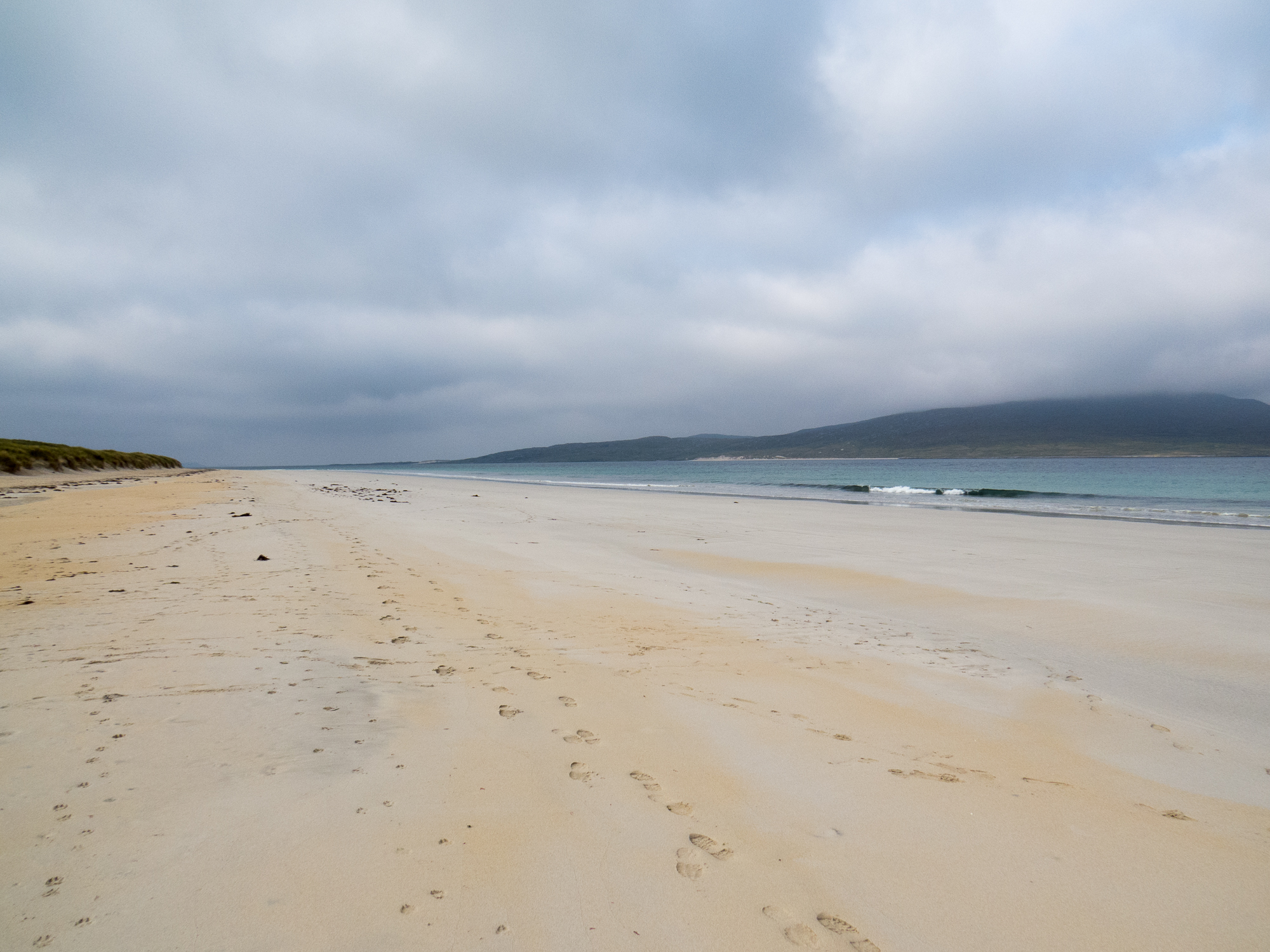 Luskentyre Beach
Luskentyre Beach
We arrive at the beach and take a long walk. The sky is blue, as is the water. I would be trying for a swim, but the water temperature is somewhere around 10°C. I dip a toe in, and it’s quickly as blue as the water. So it’s back in the car, where we continue to head south toward the village of Rodel and the 15th century St. Clement’s Church. Our route back north is along a road the locals call the Golden Road. We quickly learn that it’s not named for the views, but for the massive amount of money it took to build the road through a landscape so barren and strewn with boulders that I can’t help but think we’re driving on a different planet. This is where I first learned to deal with single track roads. One lane, with (usually) frequent passing spots. The spots are just long enough to fit a large car, and just wide enough to allow a pass. How they work is whomever is closest stops at the passing spot (staying on their side). The oncoming car is then able to pass either on the main road, or by veering into the passing spot. If there isn’t a passing spot between you when you meet the other car, somebody gets to reverse. Single lane roads winding around massive boulders means every turn is blind, so you constantly come to a near halt, then accelerate hard off of every turn. The speed limit is still 60 mph, and I’m starting to understand why every Focus I see is an ST. Not much else will get close to that speed limit. Dealing with the system was fine in October, but I’d hate to try it in peak tourist season. By the end of day three, the Astra’s wheels were black with brake dust, but there were never any signs of fade or a soft pedal.
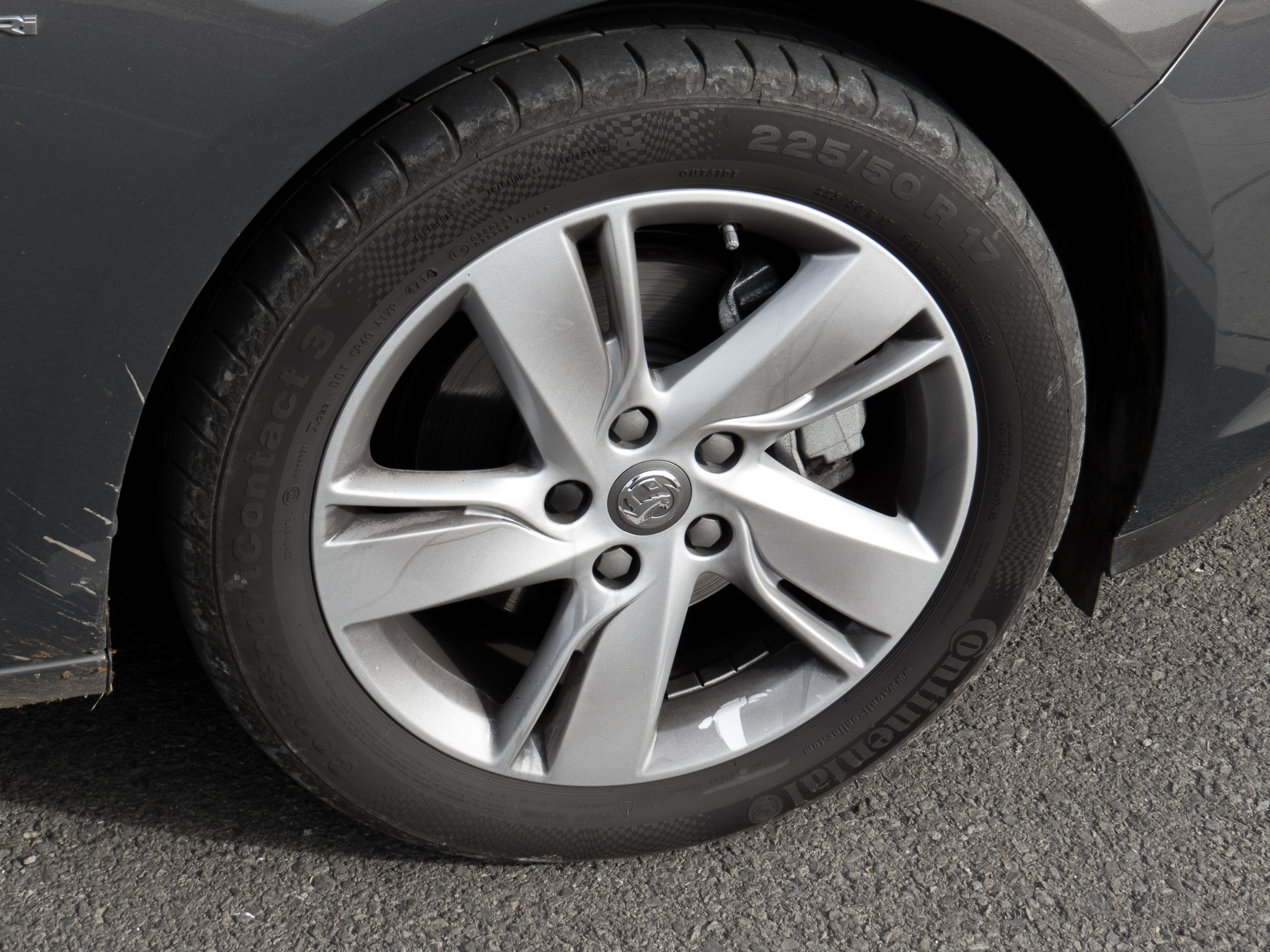 Heavy braking
Heavy braking
That road revealed serious issues with the gearbox. The throws were a nice length, and the feel was acceptable, but it has very stiff centering springs. It took effort and some concentration to avoid getting third instead of first or fourth instead of second when downshifting. This led to some stalls and some head jerking. The first day or two, I assumed it was my fault for not being used to left hand shifting. After two weeks and 1,900 miles, I can reasonably say it was most definitely the car. That's my story and I'm sticking to it.
Our day finished with with the nearly 5,000 year old Callanish Stone circle, which, while not as impressive as Stonehenge, more than makes up for that by being deserted, and by letting you walk up and touch the stones. Massive stones, nearly 5 m high. It is amazing that humans could place these so precisely so long ago. Following a stop at the lighthouse at the Butt of Lewis, we had quiet dinner at an inn in Shieldinish, where we were fortunate to see some serious local hospitality. Another tourist, from somewhere near Bristol, wanted to do some fishing but had forgotten his reel. A couple of phone calls quickly had a rod and reel for him to borrow for his stay, and a list of the best fishing spots on the islands.
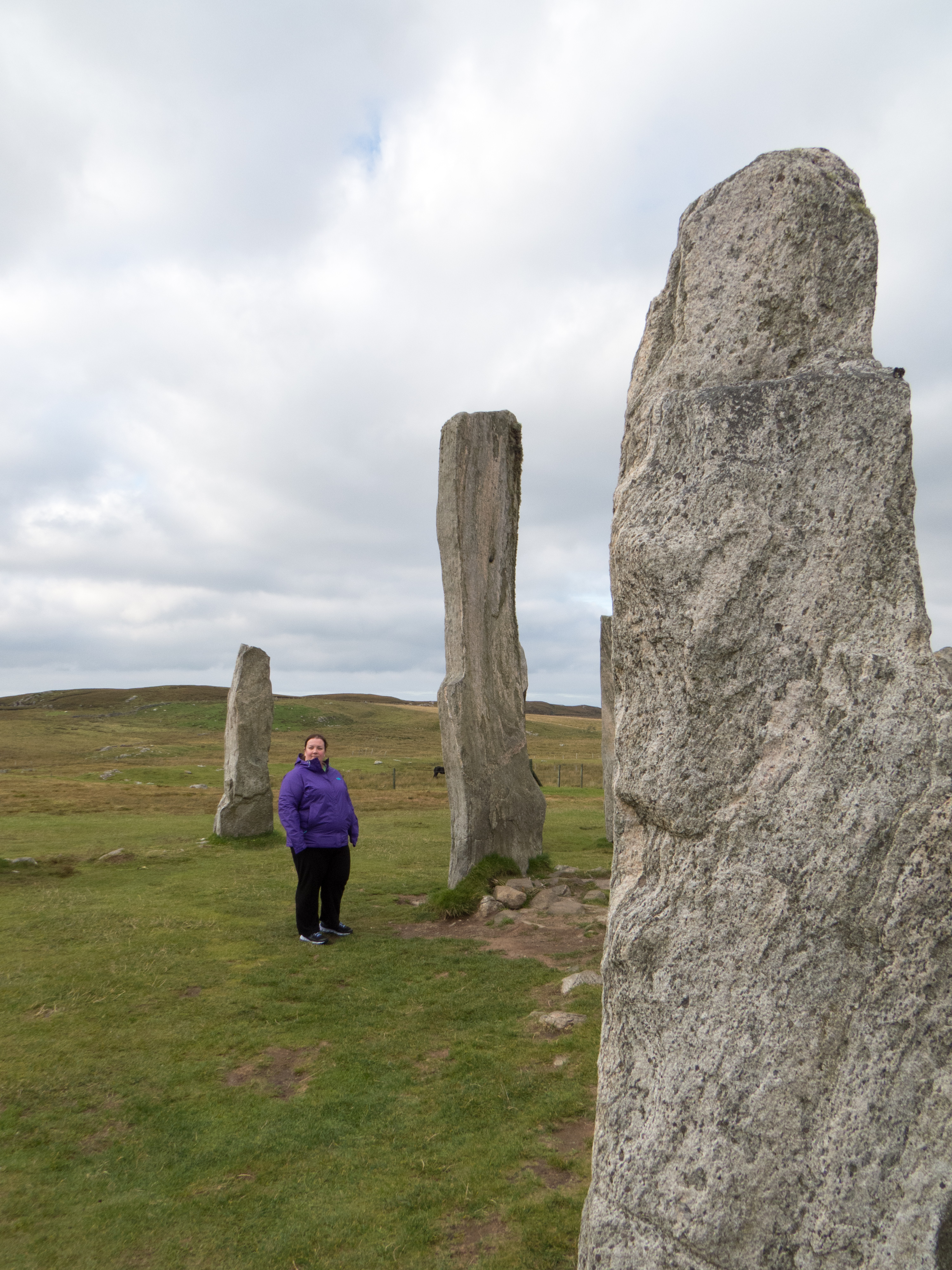 Callanish Standing Stones
Callanish Standing Stones
Day three was an early morning, and another ferry. This time back to the mainland. We arrived at Ullapool around 9 am, and quickly passed one of the most beautiful sights I’ve ever seen. The tiny local gas station only had two pumps, but in line were a Camaro Z28, a Ferrari 488 GTB, a bright green McLaren 675, a Lamborghini Aventador, and a Porsche 911 GT3 RS. I didn’t have time to stop, but they were all headed the way I was going to be headed in a couple of hours. I didn’t know what exactly we were heading toward, but after seeing that lineup I knew it would be special. A couple of hours later, after a brief excursion to walk a bridge over 60 m deep Corrieshalloch Gorge, we’re headed north on the A835. We’re now on what the local tourism board has dubbed the North Coast 500, and it’s not hard to see how the local tourism chose the road racing inspired name. It’s a 500-mile loop on the best driving roads I’ve ever seen, beginning and ending in Inverness. The Cape Breton Highlands are child’s play next to these. Perfect pavement, ribbony twists and turns, and excellent visibility. Even better, every view is an amazing vista. Over a loch, a mountain, the sea, a herd of red stag, villages that are hundreds of years old. This is the first time I’ve been able to get anywhere near the speed limit, and I’m taking advantage of it.
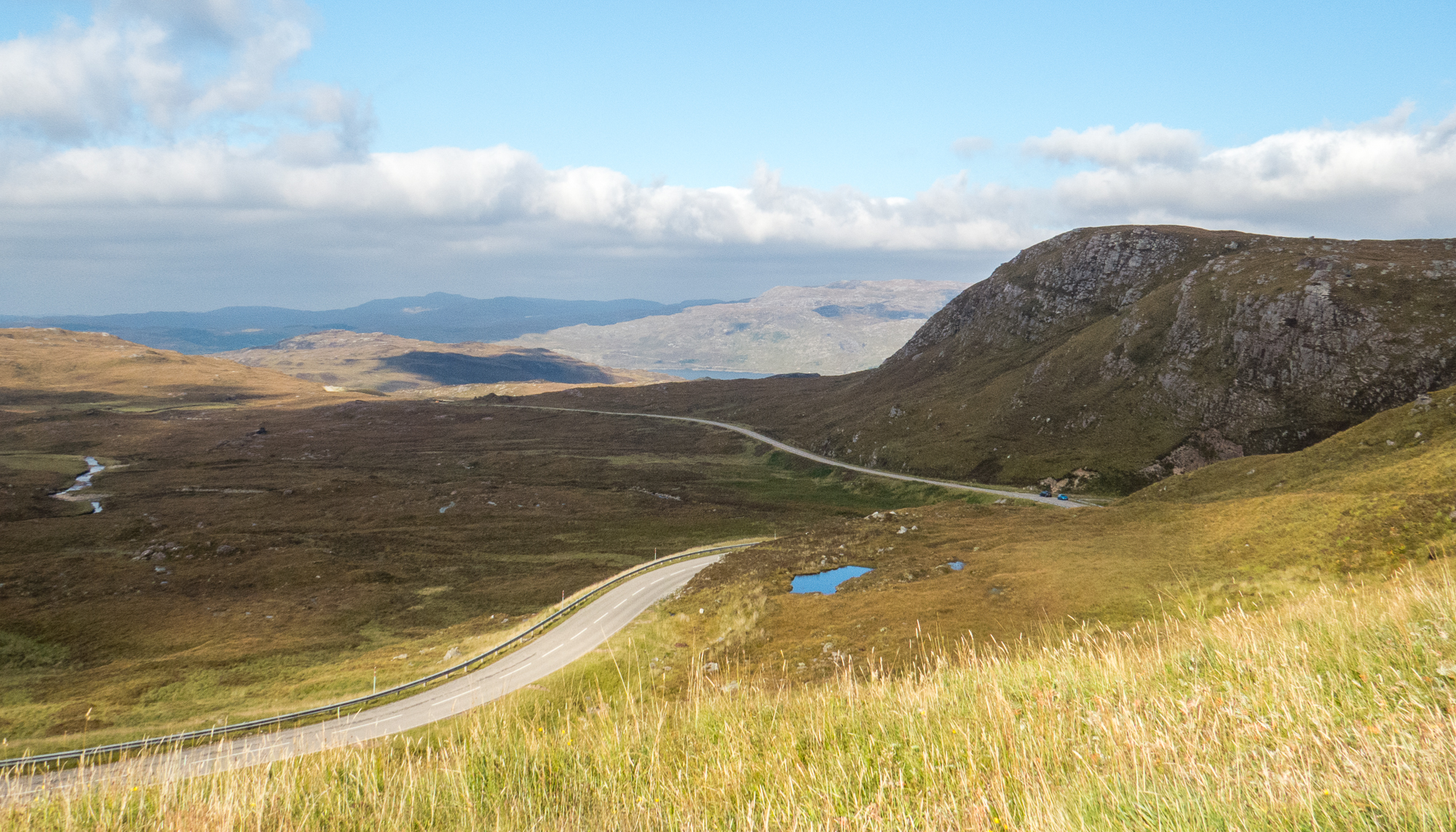 A894, Near Kylesku
A894, Near Kylesku
About five miles before the tiny village of Kylesku, we stop to look out down a glen that gives you a view most of the way to the town. I hear a roar from the valley, and quickly scan for the source. I see a gold AMG GT, with the Aventador I saw before in hot pursuit. Beautiful. Both to eyes and ears. They park in the same lot I’m in, but it’s time for me to move on. I’ll see the group from the gas station for the rest of the day. Passing and being passed. Waving the Aventador past, then trying to keep up with it. I’m able to keep it in sight, but that’s more a function of visibility than the capability of my Astra. The next 104 miles is three hours of a truly epic drive. Past the cover-photo-worthy architecture of the Kylesku bridge, the A894 sends you mostly north toward Durness where you can stop for a meal. You can also catch a passenger ferry to Cape Wrath, the north-westernmost point of mainland Scotland, or relax on the beach for a while and visit the Smoo Cave, a 15 m high sea cave at the end of a 600 m long gorge where you can take a boat tour inside the massive cave structure.
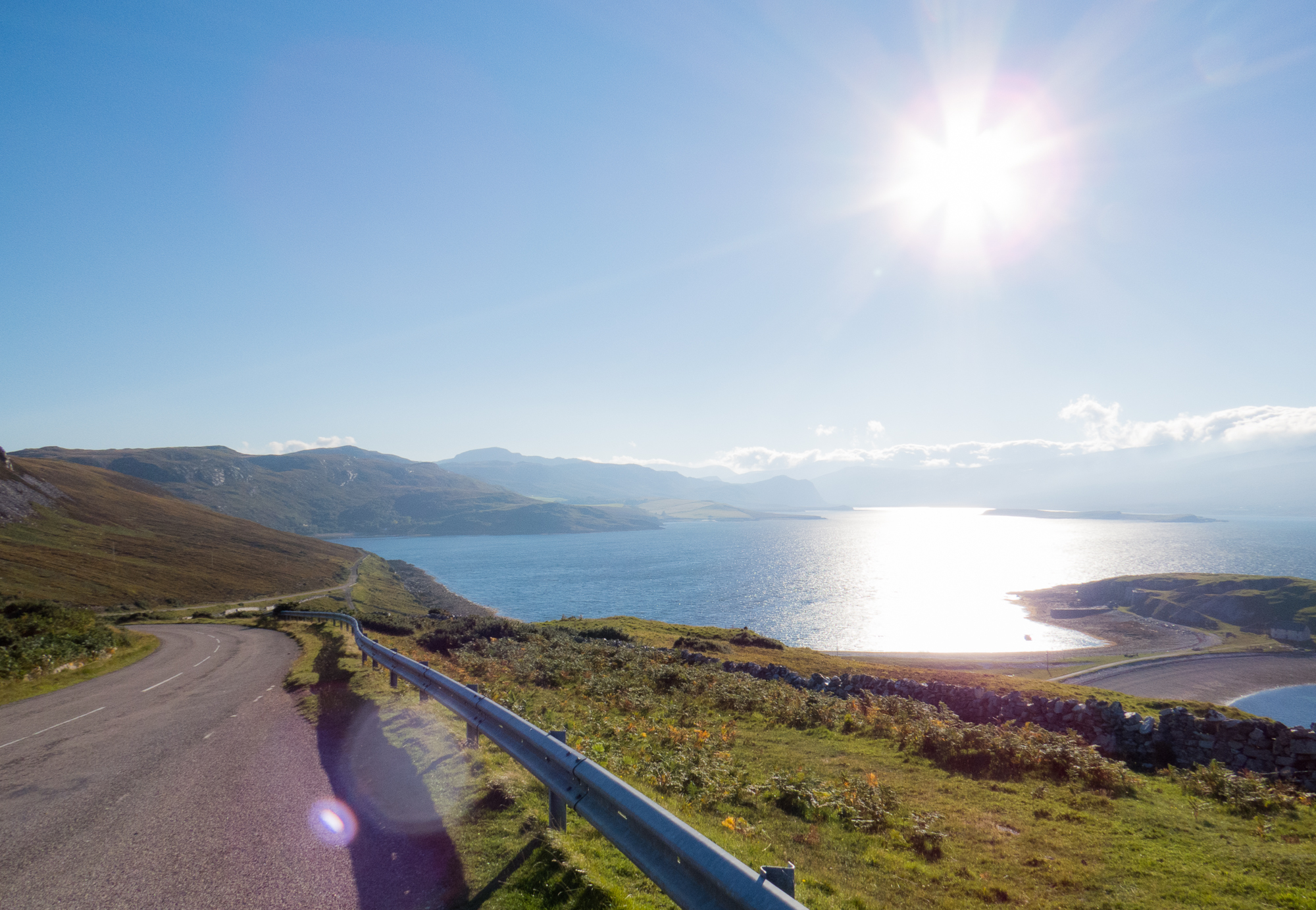 Heilam, looking over Loch Eriboll on the A838
Heilam, looking over Loch Eriboll on the A838
From there you start to head east, before winding south around Loch Eriboll. The loop around the loch has more stunning views. The west side and southern stretch are undulating with the uneven terrain and have many sharp humps and dips. I’m fairly certain we had all four wheels in the air briefly over one deceiving hump in particular. A steep, winding climb awaits you on the eastern side that would be an entertaining challenge for any car. The Astra never felt uncomposed or out of shape on these roads. Even when trail braking hard into an unexpected decreasing radius corner with a sheep on the apex. It’s not as sporty or confidence inspiring as a Focus, but it’s a dynamic step up from the Buick Verano version we get. It did bottom out more than I would expect, but not as much as the Aventador and Z28 I was trying to keep up with and it didn’t generally upset the car. That said, it didn’t have the mythical “euro-tuned suspension” crispness we’ve been lead to expect from foreign fruit cars. A causeway takes you over the Kyle of Tongue into the village of Tongue, where you can take a brief sojourn south to Ben Loyal, or continue east to our destination of Thurso. The A836 skirts the coast, in and out of the lochs and bays. Passing the surprising sight of the Dounreay nuclear test facility. From Thurso, you can head south back to Inverness, or you can take your choice of ferry to the Orkneys. We chose the Pentalina catamaran ferry, and while it was the fastest option and had an amazing bacon roll, the ride was not the smoothest. The journey across the Pentland Firth was marked with the constant sound of car alarms from the auto deck as modern alarms struggled with the idea the rocking was not, in fact, them being stolen.
The roads of Mainland Orkney are flatter that what we’ve seen so far. They are also straighter. The island is mostly flat and farmland, so the roads run the line between the fields. Many 90° turns, not many curves. Still it is a beautiful island and that evening we were fortunate enough to stumble into a local pub showing Canada playing France in the Rugby World cup. We were certainly welcomed there with open arms. The main town of Kirkwall is home to St Magnus Cathedral, an absolutely massive building, dwarfing anything else in the area, dating from the mid 1100s. It’s humbling to walk through, but so large that if every islander were in attendance it would likely still seem empty. At nearby Helgi’s pub I savoured my first hand pumped, cellar temperature glass of local Orkney Blast beer. It’s not always clear if it’s the drink, the company, or the atmosphere, but that was possibly the finest pint I’ve ever had.
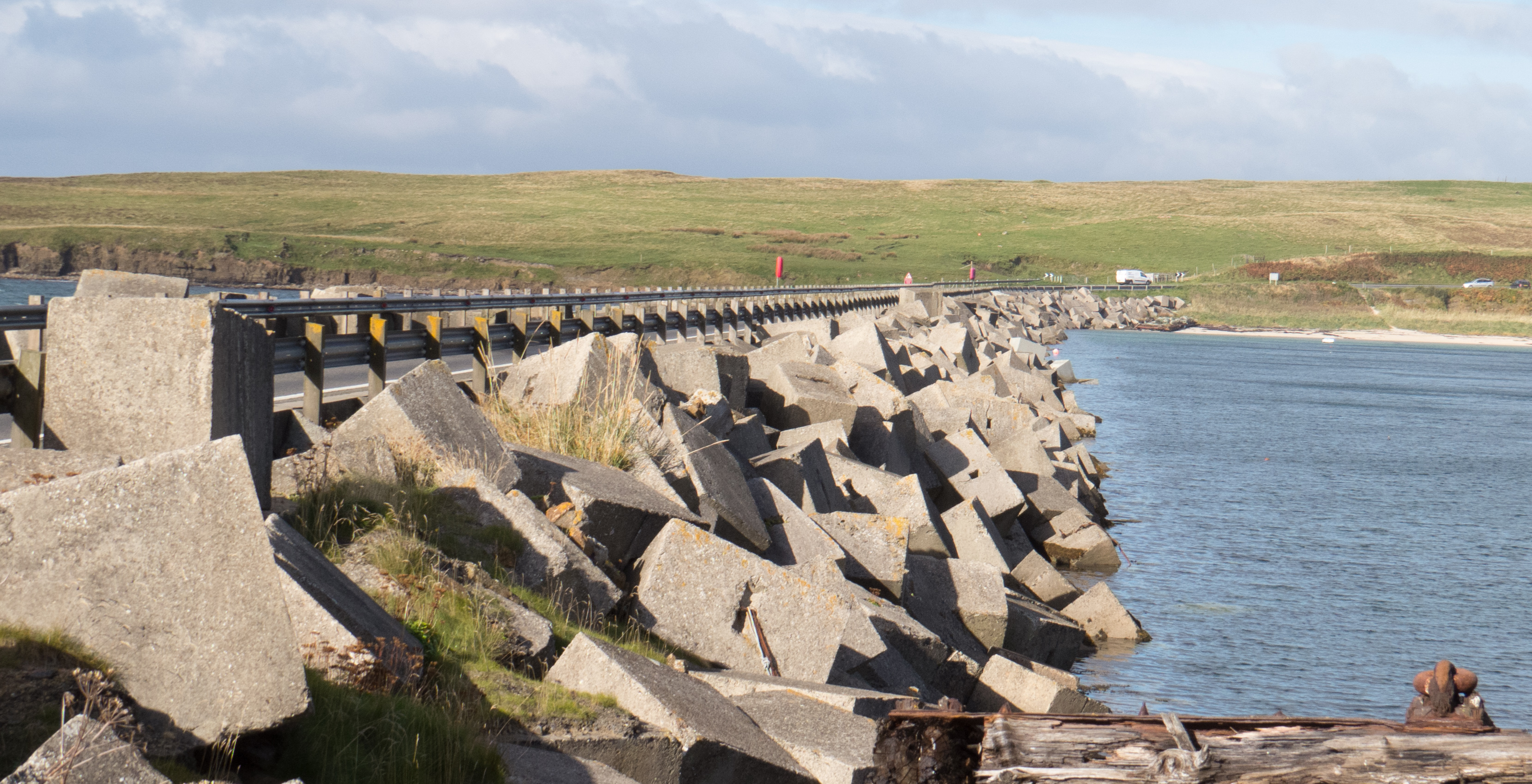 Churchill Barrier
Churchill Barrier
The Orkneys are also home to the Churchill Barriers. Made from massive piles of rectangular concrete blocks, these are causeways originally placed to limit Axis submarine access and protect the fleet anchorage at Scapa Flow during World War II. Now they make up the roadways which take you to the island of South Ronaldsay. In the middle of them is the Italian chapel. A Quonset hut which was transformed into a chapel by prisoners of war. Inside is covered with beautiful stonework, frescoes and tile. All of it paint.
The next morning we take the ferry back to the mainland and head east to John o’Groats and Duncansby Head, which is the most northeasterly point of Scotland. We then take the A99 south through Wick. Again following the coast, with a beautiful view of the North Sea. Interrupted only occasionally by an oil rig, fuelling the local economy. This part of the country is still more flat than the highlands, but still interesting. Excellent views, long beaches, and very little traffic make for an enjoyable morning. We then join the A9, and it’s smooth four lane highway for most of the rest of the distance to Inverness. It’s 5pm so I’m hoping to skirt the city, but the route to our cottage takes us through the heart of downtown. Fortunately traffic isn’t an issue and we’re soon on our way to Loch Ness. The roads here are the classic “Narrow British Country Lane” you’re probably thinking of when you think of rural driving in the UK. Stone fence at the pavement edge on one side, tall trees providing a canopy completely covering the road. Still, it’s good progress and we arrive at our cottage. It was located next to the Dores Inn, home to the best food we had in Scotland, and has a full-time “Nessie Hunter” living in the parking lot. It was just steps from our door to the Loch. Unfortunately the only monsters we saw were the copious amount of ducks.
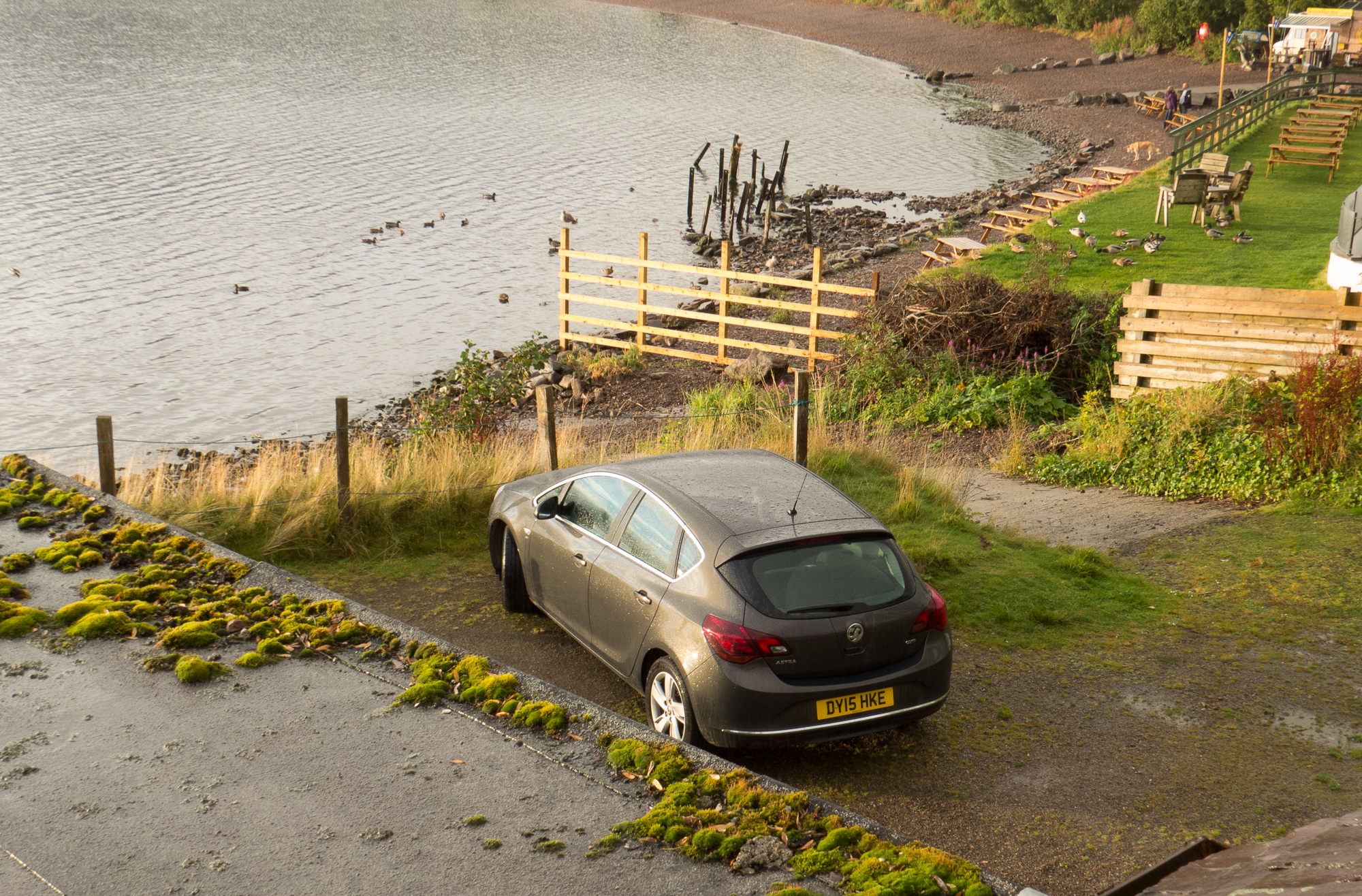 On the shore of Loch Ness, Dores
On the shore of Loch Ness, Dores
The next day takes us back to Inverness and around the northern side of Loch Ness. This is another amazing road. Winding along the shores of the Loch, in and out of the trees, and then past the mostly standing ruins of Urquhart Castle. The end of the Loch takes you to Fort Augustus, where the road opens up, and sweeping turns take you along the shores of Loch Oich and Loch Lochy, where you start to get your first views of Ben Nevis. This is our destination for the day, and we take a gondola up just over 1,000m to the top of Aonach Mor, where you can see for miles over Fort William and the surrounding area. Returning to our cottage, we take the southern route around Loch Ness, on General Wade’s Military road. This stretch winds up toward the summit of the edge of the Great Glen, and started out quite badly. It was far too tight, had no visibility, and we were both tired from a long day. It was going poorly until we reached Loch Tarff at the top of the hill, and were shocked by yet more breathtaking views, and another enthralling drive. The next dozen miles or so more than made up for the first stretch.
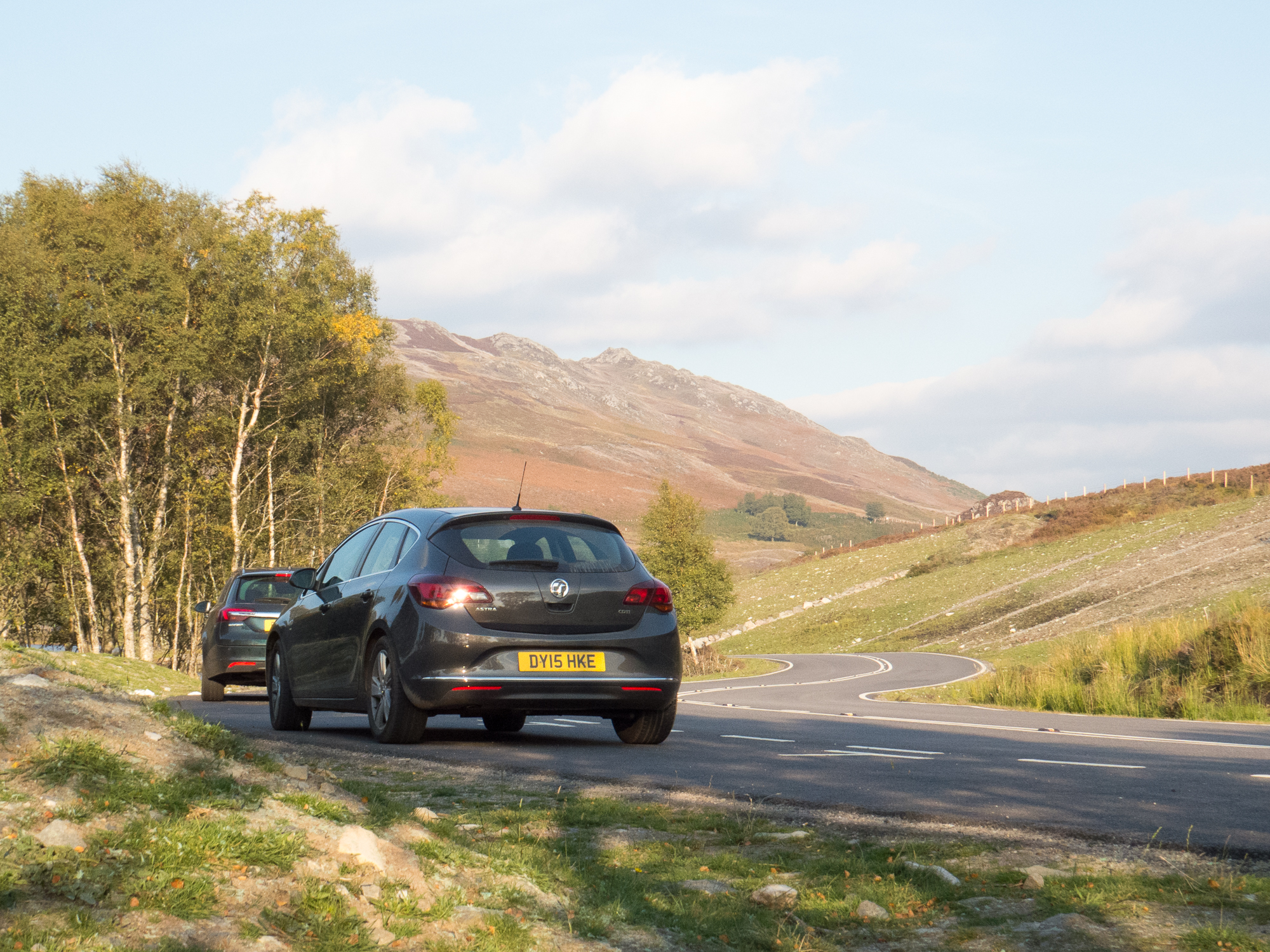 B862 near Loch Tarff
B862 near Loch Tarff
Now it’s time for a drive into whiskey country. First is a stop to tour the battlefield at Culloden. Home to the final Jacobite battle in 1745, it is a solemn and historic place. The original battle lines are marked with flags, and there are markers for each Clan involved. It’s also where we saw our first Highland Coo. We then turned south from the A96 at Forres onto the B9010. This took us to the Cardhu distillery, where we were told that most of the distilleries in the area closed in October. They still gave us a tasting and directed us to Cragganmore, with the advice it was the only Speyside distillery offering tours that time of year. After an entertaining tour we had another tasting, with three excellent single malts, including a 29-year-old single cask. Fortunately for me, they had discovered you can’t do many tastings and drive home, so someone had the inspired idea for “to go” containers. With lids, to save the majority for when I got back to the cottage. Following the River Spey was enthralling. Winding up and down through the forests of the valley, passing historic distillers, before taking the A95 and A9 back to Inverness. We had planned to do some shopping there, but were surprised to find the mall closed at 6pm most days. This seemed to be common everywhere we visited.
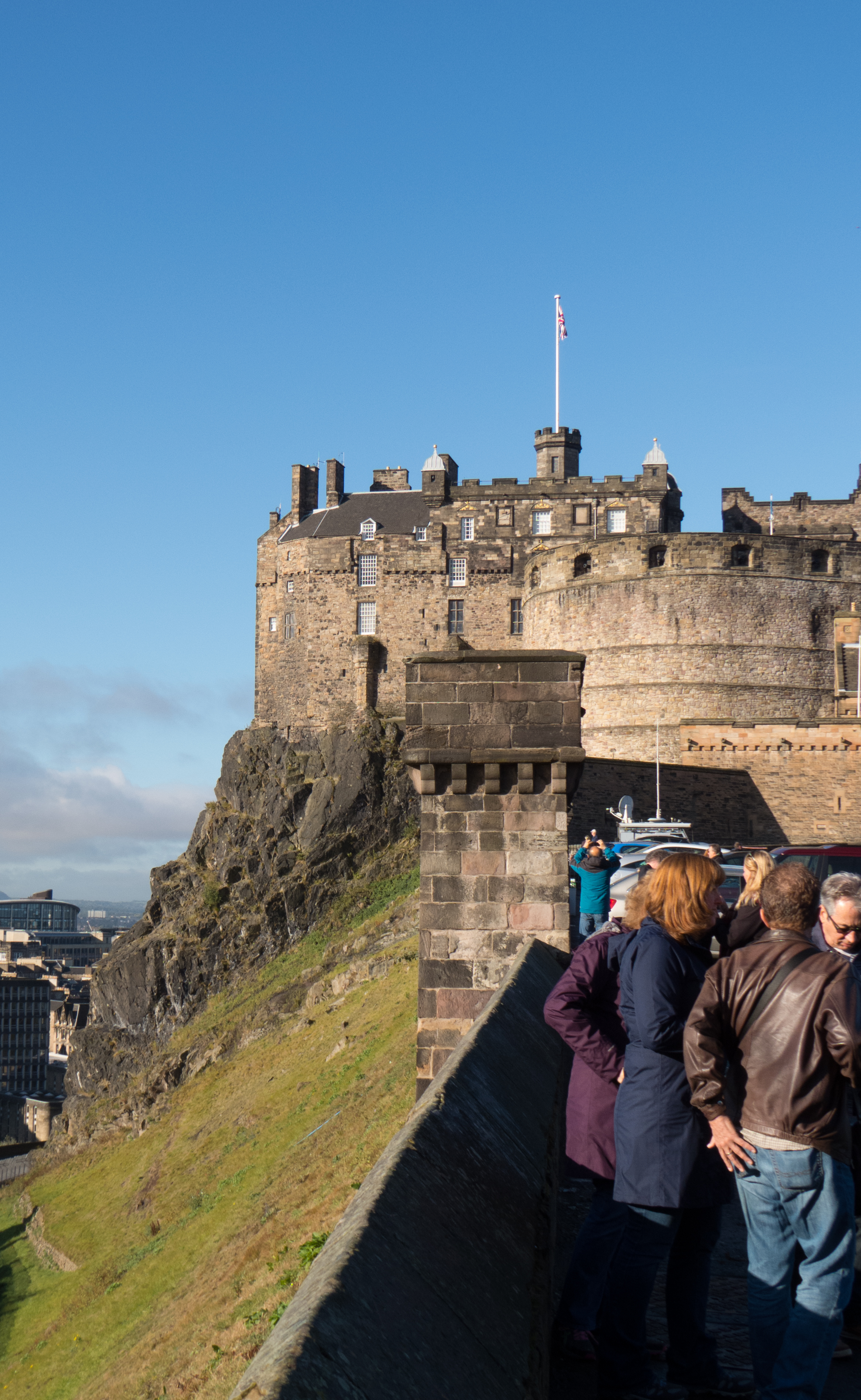 Edinburgh Castle
Edinburgh Castle
The following day was a motorway hike to Edinburgh where we spent too few days walking the city and exploring the gardens, Edinburgh Castle and the shops of Princess street before returning to Glasgow for our flight home. The Astra was a faithful companion. As quick as I needed, stopped when I needed, plenty of room for souvenirs, two weeks worth of luggage, and myself and my new bride. We put around 3000 kilometres on it in 13 days, averaging 78 km/h, and getting a shocking 4.3 L/100km on diesel fuel. That fuel economy was really appreciated at $2.30 Canadian per litre. I know diesels have just taken a serious blow to their image but that mileage and performance, especially given the acceleration demands from the Highlands roads, is astounding. The only serious problem I had was a quirk where if you are rolling with the clutch in for more than a few seconds (like when fighting to engage 2nd), the engine will shut off. Which is a lot of fun in a six lane roundabout. Some experimentation showed that the car would do that in any gear at any speed. I thought it was some sort of start-stop system, but the only way to restart was clutch-out, using the key. And the car wouldn’t shut off at lights no matter what I did. Well, there was a second serious problem… Two weeks was not nearly enough time to explore the North Coast and Highlands of Scotland. I need to go back. Soon.
